













































AUGUST
EDITORIAL DIRECTOR
Jenn Rafael
CREATIVE SERVICES MANAGER
Beth Bedard
SENIOR CONTENT MANAGER
Matt Sanderson
ADDITIONAL GRAPHIC DESIGN
TGD
EDITORIAL BOARD
William Shackelford, Cindy Reneé Blythe
CONTACT US
NARFE Magazine
606 North Washington St. Alexandria, VA 22314-1914
Phone: 703-838-7760 Fax: 703-838-7781
Editorial: communications@narfe.org
Advertising Sales: mprimuth@narfe.org
NARFE FOR THE VISUALLY IMPAIRED
ON THE TELEPHONE: This publication can be heard on the telephone by persons who have trouble seeing or reading the print edition. For more information, contact the National Federation of the Blind NFBNEWSLINE® service at 866-504-7300 or go to www.nfbnewsline.org.
ON DIGITAL AUDIO: Issues of NARFE Magazine are also available in audio format through the National Library Service for the Blind and Physically Handicapped (NLS). For availability, call 202-727-2142 or your local NLS service provider.
The Association, since July 1970, has been classified by the IRS as a tax-exempt labor organization [not a union]; however, dues and gifts or contributions to the Association are not deductible as charitable contributions for income tax purposes.

WILLIAM SHACKELFORD
President; natpres@narfe.org
CINDY RENEÉ BLYTHE Secretary/Treasurer; natsectreas@narfe.org
TO JOIN NARFE, RENEW YOUR MEMBERSHIP OR FIND
A LOCAL CHAPTER:
CALL (TOLL-FREE) 800-456-8410 OR GO TO www.narfe.org
TO CHANGE YOUR ADDRESS, PHONE NUMBER OR EMAIL LISTING:
CALL (TOLL-FREE) 800-456-8410 EMAIL memberrecords@narfe.org OR GO TO www.narfe.org, log in and click on “My Account”
TO REACH A FEDERAL BENEFITS SPECIALIST: EMAIL fedbenefits@narfe.org
NARFE HEADQUARTERS
606 N. Washington St. Alexandria, VA 22314
703-838-7760
Hours of operation: Monday-Friday, 8 a.m.-5 p.m. ET
REGION I Jeff Anliker (Connecticut, Maine, Massachusetts, New Hampshire, New York, Rhode Island and Vermont)
Tel: 413-813-8136
Email: jeff.anliker@outlook.com
REGION II Paul Schwartz (Delaware, District of Columbia, Maryland, New Jersey and Pennsylvania) Tel: 240-838-2200
Email: schwartzpaul02@gmail.com
REGION III Lynn Harper (Alabama, Florida, Georgia, Mississippi, South Carolina and Puerto Rico) Tel: 478-951-3260
Email: Lynn_harper@msn.com
REGION IV Ed Konys (Illinois, Indiana, Michigan, Ohio and Wisconsin) Tel: 937-207-6087
Email: rvpkonys@outlook.com
REGION V Linda Sawvell (Iowa, Kansas, Minnesota, Missouri, Nebraska, North Dakota and South Dakota) Tel: 563-340-4823
Email: Lsawvell262@gmail.com
REGION VI Patsy Ashton (Arkansas, Louisiana, Oklahoma, Republic of Panama and Texas) Tel: 504-452-3870
Email: rvp6@narfe.org
REGION VII Sharon Reese (Arizona, Colorado, New Mexico, Utah and Wyoming) Tel: 575-649-6035
Email: sreese346@gmail.com
REGION VIII John Almquist (California, Hawaii, Nevada and Republic of Philippines) Tel: 949-246-4378
Email: almquistjw@yahoo.com
REGION IX Steven Roy (Alaska, Idaho, Montana, Oregon and Washington) Tel: 425-344-3926
Email: stevenroy1@yahoo.com
REGION X Robert Allen (Kentucky, North Carolina, Tennessee, Virginia and West Virginia) Tel: 757-404-3880
Email: rvp10@narfe.org
NARFE Magazine (ISSN 1948-4453) is published monthly except in February and July by the National Active and Retired Federal Employees Association (NARFE), 606 N. Washington St., Alexandria, VA 22314. Periodicals postage paid at Alexandria, VA, and additional mailing offices. Members: Annual dues includes subscription. Nonmember subscription rate $48. Postmaster: Send address change to: NARFE Attn: Member Records, 606 N. Washington St., Alexandria, VA 22314. To ensure prompt delivery, members should also forward changes of address without delay. Because of the volume involved, NARFE cannot acknowledge nor be responsible for unsolicited pictures and manuscripts, although every reasonable precaution is taken. All submissions become the property of NARFE. Copyright © 2025, NARFE. Advertisements in the magazine are not endorsements of products and/or services by NARFE, unless officially stated in the ad. We shall accept advertising on the same basis as other reputable publications: that is, we shall not knowingly permit a dishonest advertisement to appear in NARFE Magazine, but at the same time we will not undertake to guarantee the reliability of our advertisers.






























The best walk-in tub just got better with breakthrough technology! Presenting the all new Safe Step Walk-In Tub featuring MicroSoothe. ® An air system so revolutionary, it oxygenates, softens and exfoliates skin, turning your bath into a spa-like experience. Constructed and built right here in America for safety and durability from the ground up, and with more standard features than any other tub.
✓ Heated seat providing warmth from beginning to end
✓ Carefully engineered hydro-massage jets strategically placed to target sore muscles and joints
✓ High-quality tub complete with a comprehensive lifetime warranty on the entire tub
✓ Top-of-the-line installation and service, all included at one low, affordable price
You’ll agree – there just isn’t a better, more affordable walk-in tub on the market.
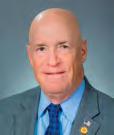
To support legislation and regulations beneficial to federal civilian employees and annuitants and potential annuitants under any federal civilian retirement system and to oppose those detrimental to their interests.
To promote the general welfare of federal civilian employees and annuitants and potential annuitants, to advise and assist them with respect to their rights under retirement, health and other employee and retiree benefits laws and regulations, and to represent their interests before appropriate authorities.
To cooperate with other organizations and associations in furtherance of these general objectives.
On May 21, NARFE lost a true friend and champion for our many issues on Capitol Hill. Rep. Gerry Connolly passed away following a battle against esophageal cancer. The longtime Northern Virginia congressman, representing the 11th District, was well known as a fierce advocate for federal workers, many of whom live in his district. As the ranking member of the House Oversight and Government Reform Committee, he demonstrated his commitment to federal workers, as the current administration has sought to dismantle much of the workforce. Congressman Connolly enjoyed attending NARFE meetings throughout the 11th District, and his leadership as a committed representative of his constituents on NARFE issues earned him frequent mention in our weekly newsletters and monthly magazines. For the many NARFE members who had the pleasure of not only getting to know him but also working with him, the loss of Congressman Connolly is not just the loss of a stalwart advocate; it’s a personal loss as well.
In August, NARFE members typically have the opportunity to meet with their representatives and senators during the congressional recess. In the past, many members of Congress have held town hall-style meetings in their districts or states to hear from their constituents about what is important to them. NARFE’s priorities for the 119th Congress include continuing to protect the earned retirement and health benefits of federal employees and retirees, continuing the supplement for Federal Employee Retirement System (FERS) retirees, enacting full cost-of-living adjustments (COLAs) for FERS retirees, ensuring adequate oversight of proposals to reorganize the federal government, and providing substantive feedback on efforts to modernize the civil service. Everyone has an opinion on the actions of Capitol Hill that affect their lives, and the month of August is your opportunity to express those opinions to your lawmakers fully.
In the first part of 2025, NARFE experienced an increase in membership. These increases are significant, but the benefits are only gained when a member renews after the first year. Chapter and Federation Membership chairpersons do a fantastic job of keeping members on our rolls. Everyone can assist with membership retention efforts by encouraging dues withholding or multiyear renewals. Members don’t need to worry about keeping up with their renewals, and they also receive a slight discount on the annual membership dues.
Some members have told us they want to receive NARFE Magazine online only and no longer want a print copy. For digital-only delivery of NARFE Magazine going forward from this issue, please visit members.narfe.org, choose “profile” and go to https://members.narfe.org/My-Account/My-Profile Scroll to the question “Would you like to receive NARFE Magazine via email only, and stop receiving it by mail?” Click yes and save. Please make sure your current email address is listed in your contact information in your account.
Our outstanding efforts to raise funds for Alzheimer’s research continue. Chapters and federations have developed strong ideas to support our organization in achieving its current goal of reaching $17 million in contributions by the end of calendar year 2026. To date, NARFE members have contributed more than $16.6 million to the NARFE Alzheimer’s Research Fund. Wouldn’t it be wonderful if we could reach our goal of $17 million by the time FEDcon26 rolls around?
As always, please remember that the lines of communication between me and all NARFE members will always be open to both suggestions and constructive criticism. I appreciate your support. The future of NARFE is in our hands. Stay healthy and stay safe!


If you’re a retired Federal or Postal Service employee who didn’t switch health plans when you became eligible for Medicare, contact us at AetnaFedsLive.com
Now could be your time to switch, even after Open Season.
These rates do not apply to all Enrollees. If you’re in a special enrollment category, please refer to the FEHB or PSHB Program website or contact the agency or Tribal Employer which maintains your health bene�ts enrollment.
Advantage
You’ve worked hard, keep more money in your wallet
If Medicare is your primary coverage, give yourself a break. You may be able to choose a plan with low premiums, $0 copays and $0 deductibles for medical services. This plan may also help lower your Medicare Part B premium when your provider accepts Medicare and the plan.
Research on your own at AetnaFeds.com/RetireePlans or AetnaFedsPostal.com/Retiree Plans
Schedule an appointment and we’ll walk you through the details at
Aetna is the brand name used for products and services provided by one or more of the Aetna group of companies, including Aetna Life Insurance Company and its a�liates (Aetna). This is a brief description of the features of this Aetna plan. Before making a �nal decision, please read the Plan’s Federal brochure. All bene�ts are subject to the de�nitions, limitations and exclusions set forth in the Federal brochure. Refer to AetnaFeds.com or AetnaFedsPostal.com

WHETHER you are planning your next vacation or move, buying a gift or planning for retirement, NARFE members can save money on everyday purchases with special discounts from our affinity partners. Visit www.narfe.org/ perks or see p. 50.
Want to stay on top of key federal news and benefits information?
Subscribe to NARFE Daily News Clips. This newsletter features
breaking news and informative articles from various outlets curated just for NARFE members, as well as NARFE media statements, opinion columns and

Catch up on past NARFE Federal Benefits Institute trainings in our Webinars On Demand. You’ll find videos, slides and Q&A sessions dating back to January 2019. View them at www.narfe.org/ webinar-acrhives.
If you haven’t visited NARFE’s growing online community yet, now is the time to join the conversation and start one too! NARFE designed FEDHub to support your federal journey, leverage the knowledge and value of our entire community—all that’s missing is you! Start talking with federal colleagues and retirees at fedhub. narfe.org/quick-start-guide.
more. NARFE Daily News Clips is delivered to e-mail inboxes every weekday morning. To subscribe, visit www.narfe. org/clips.

Get the most recent monthly and annual Thrift Savings Plan returns (G, F, C, I, S and L Funds) online at www.narfe.org/tsp-funds.
Find out how many retirement claims OPM Retirement Services receives and processes each month, with average processing times and total inventory at www.narfe.org/opm-processing.






Dues Withholding is for retired members and is only $42 annually ($3.50/monthly annuity withholding). To apply, see NARFE’s Dues Witholding application on pg. 45 of this issue of NARFE Magazine or on the back of your next renewal notice. It takes about 4-5 months to get members onto dues withholding.
Sign up for AutoPay for a 1-year, 2-year or 3-year membership rate and save. 1 yr – $48 2 yr – $92 3 yr – $126
Login to our website at https://members.narfe.org/ and click on My Account and then My Settings and click on My AutoPay Account to preauthorize your card today! Call 800-456-8410 and dial 1 for membership assistance to update your rate. Or anyone can sign
Stay in your chapter and don’t worry about forgetting to renew!

n June, NARFE National President William Shackelford submitted a formal comment letter to the U.S. Office of Personnel Management (OPM) in opposition to a proposed rule “Improving Performance, Accountability and Responsiveness in the Civil Service” (90 Fed. Reg. 17182). The rule, issued on April 23, 2025, proposes the creation of a new employment classification, Schedule Policy/Career (Schedule P/C), which would reclassify a broad swath of federal employees into roles that can be terminated at will. NARFE argues that the rule represents a sweeping and dangerous overhaul of long-established civil service protections and urges its complete withdrawal.
The proposed Schedule P/C rule would resurrect, with minimal adjustments, the Schedule F framework issued via executive order in 2020, which was subsequently rescinded. OPM’s current proposal seeks to codify a similar framework, allowing for the conversion of tens of thousands of career
roles into politically vulnerable positions based on vaguely defined criteria of “policyinfluencing” responsibilities. NARFE’s comment letter presents a detailed critique of the proposed rule. Chief among its concerns is the undermining of the merit-based, nonpartisan civil service system that has been a cornerstone of U.S. governance since the passage of the Civil Service Reform Act of 1978. The association warns that Schedule P/C would convert apolitical roles—held by scientists, analysts, lawyers, and more—into positions subject to political loyalty tests, thereby reviving a modern spoils system.
AUGUST ACTION ALERT: URGE MEMBERS OF CONGRESS TO PROTECT FEDERAL BENEFITS!
Visit NARFE’s Legislative Action Center at www.narfe.org to send a message to your lawmakers urging them to protect federal benefits from cuts via budget reconciliation legislation. The House passed H.R. 1, the “One Big, Beautiful Bill Act,” which unfairly scapegoats the federal community with spending cuts to offset the cost of their tax and spending policy priorities. These cuts include eliminating the FERS annuity supplement for individuals vested in the system, including those eligible for or close to retirement, and undermining the merit-based civil service by incentivizing at-will employment. At the time of publication, the Senate had not yet acted, and the timetable for final passage was potentially extended into August. Visit narfe.org/advocacy/ legislative-action-center/ for the latest updates and to contact your elected officials TODAY to tell them that federal employees and annuitants should NOT shoulder the consequences of their political agenda!
NARFE emphasizes the proposed rule:
• Constitutes a massive expansion of at-will employment, in violation of statutory protections.
• Undermines civil service integrity and erodes public trust in government impartiality.
• Threatens continuity, institutional memory, and subject matter expertise across agencies.
• Harms recruitment and retention by deterring skilled professionals from public service.
MYTH: Budget reconciliation legislation determines federal agency budgets for the upcoming fiscal year.
REALITY: Annual agency budgets are determined by appropriations bills. Budget reconciliation legislation is a way for Congress to change “mandatory” spending laws that do not require annual re-authorization, and to adjust tax policies. Such legislation is not subject to a filibuster in the Senate. It, therefore, may be passed with the support of a simple majority, rather than the three-fifths majority required to end debate and allow for passage. But the “Byrd Rule” provides certain limits on what can be passed via this type of legislation—for example, it cannot impact Social Security, it cannot increase deficits beyond the 10-year budget window, and it cannot change policy that has “merely incidental” budgetary impact. Any provision that violates the Byrd Rule is subject to a point of order, which can only be waived with a three-fifths vote.
• Provides only superficial claims of nonpartisanship without enforceable safeguards.
• Relies on anecdotal, ideologically driven narratives rather than robust evidence.
• Fails to establish credible accountability mechanisms or enhance performance outcomes.
• Reduces government transparency and responsiveness to Congress and the public.
The letter also highlights a chilling effect on civil servants’ willingness to offer objective advice or raise ethical concerns, as they fear being labeled resistant and dismissed. The proposed rule, NARFE contends, would
shift the basis of job security from professional competence to political allegiance, increasing the risk of corruption, waste, and diminished government effectiveness.
NARFE reaffirms its commitment to a professional and independent civil service and calls on OPM to withdraw the rule entirely. The association warns that Schedule P/C not only threatens the structure and function of the civil service but also strikes at the heart of democratic governance by weakening institutional checks and public accountability.
—BY JOHN HATTON, STAFF VICE PRESIDENT, POLICY AND PROGRAMS
The House of Representatives passed a large tax and spending package, H.R. 1, the “One Big, Beautiful Bill Act,” on May 22, that included cuts to earned federal benefits and policies that undermine the merit-based civil service. But before House floor consideration, several provisions included in the version approved by the House Oversight and Government Reform Committee
were removed entirely or amended.
Several changes were made to federal benefit provisions in the House Rules Committee print (the bill presented to come to the floor before Rules Committee amendments) and via a final manager’s amendment (version amended by the controlling party).
Notably, the amendments: (i) removed provisions to increase contributions toward retirement
for employees covered by the Federal Employees Retirement System (FERS), (ii) removed the provision to base federal annuities on the highest five years of salary rather than the highest three years of salary, (iii) shifted the effective date for elimination of the FERS annuity supplement to apply to those first receiving the annuity supplement on or after 1/1/28
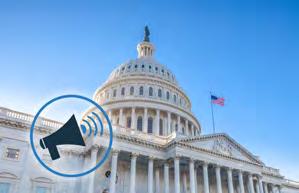
LEARN MORE about how you can take action to protect your earned pay and benefits by reviewing NARFE Grassroots materials at www.narfe.org/advocacy
In May 2025, the Trump administration unveiled its fiscal year 2026 “skinny” budget proposal, offering a high-level blueprint of its discretionary spending goals. The budget reveals the administration’s intention to enact a significant reorientation of federal priorities, with major increases in defense and homeland security spending offset by deep reductions in nondefense discretionary programs. The final spending levels will require congressional approval. At the core of the budget is a dramatic $163 billion—or roughly 23%—cut to non-defense discretionary spending. The proposal reduces this category to $557 billion, down from approximately $720 billion in the prior year. That figure marks a return to levels last seen in the first Trump administration, and it reflects the administration’s
stated intent to shrink the federal footprint in areas such as education, housing, environmental protection, and social services.
In contrast, defense discretionary spending is slated to increase by 13%, rising to approximately $1.04 trillion. This marks the first time in U.S. history that defense outlays in the discretionary budget would cross the trilliondollar threshold. The proposed expansion includes funding for nuclear weapons modernization, missile defense systems, and significant increases in procurement and readiness funding across the services.
The Department of Homeland Security would also see a roughly 65% boost, bringing its budget to about $129 billion— driven largely by enhanced border enforcement and immigration detention funding.
Both defense and homeland security spending levels rely on the assumed passage of additional spending through budget reconciliation, amounting to $119 billion for defense and $42 billion for homeland security. Otherwise, the proposed defense spending level remains at $892 billion, unchanged from the FY2025 level.
The skinny budget is only the first step in the annual budget process. More detailed information on the budget proposal will follow, after which Congress will begin drafting and negotiating appropriations bills, setting up contentious negotiations ahead of a September 30, 2025, deadline to avoid a lapse in appropriations and a government shutdown.
—BY JOHN HATTON, STAFF VICE PRESIDENT, POLICY AND PROGRAMS
In a May 7, 2025, memorandum, the Office of Personnel Management (OPM) indicated that it will be transitioning to a fully digital retirement processing system. OPM’s memo requires that all new retirement applications started on or
after June 2, 2025, along with any supporting documents, be submitted electronically to OPM. Paper applications will no longer be accepted effective July 15, 2025.
All federal agencies supported by the National Finance Center (NFC) and
the Interior Business Center (IBC) for human resources (HR) will be required to submit applications via OPM’s online retirement application (ORA). For those not serviced by NFC or IBC, OPM will provide a complementary method. OPM will provide training and
onboarding for all agencies, which must be completed by June 2.
According to the OPM, the new system will “fully address” the existing paper-based retirement system. The goal is to streamline retirements, especially in cases of reductions in force (RIF), which currently strains a system that takes 3 to 5 months to process paperwork. Transitioning to electronic processing is a significant step toward modernizing a retirement system plagued by “fragmented and outdated HR systems,” according to OPM. These outdated systems have reached a critical failure point, resulting in payroll errors, disruptions to benefits, and a manual workload that is no longer sustainable.
NARFE has promoted modernization of OPM’s retirement processing for years, including the utilization of an online retirement application. While OPM had previously piloted this concept, this news represents an expanded and accelerated move to a digital retirement application process. If it works well, it should reduce burdensome delays for federal retirees awaiting their full retirement annuities.
But the system has not yet rolled out, and OPM will need to demonstrate that it works in practice. Will it effectively cut down processing time, and by how much? Will it maintain accuracy in processing applications, so retirees receive their full benefits? Only time will tell.
—BY ELLIE DORSEY, FEDERAL BENEFITS INSTITUTE MANAGER
ACT? Visit NARFE’s Federal Benefits Institute to find frequently asked questions our staff is compiling at https://www.narfe.org/advocacy/ social-security-fairness-act-frequently-asked-questions/. Members may also call 1-800-456-8410, and press 2 for federal benefits experts, or email fedbenefits@narfe.org.
OR Contribute monthly through your annuity or by credit card. Get started at ww.narfe.org/pac-sustainer
Monthly contributors of $10 or more receive a sustainer lapel pin
Make
q $25 – Basic lapel pin
q $50 – Bronze lapel pin
q $100 – Silver lapel pin
q $250 – Gold lapel pin
q $500 – Platinum lapel pin
q Other: _________
Contribution totals are cumulative for the 2025-2026 election cycle
n No pin for me.


NARFE Member #:
Name:
Address:
City:
State: ZIP:
Occupation:
Employer:
q Charge my credit card
Name
Signature: Date:
To comply with federal law, we must use our best efforts to obtain, maintain and submit the name, mailing address, occupation and name of employer of individuals whose contributions exceed $200 each calendar year. NARFE-PAC is for the benefit of political candidates and activities on a national level. NARFE members have the right to refuse to contribute without reprisal, and NARFE will neither favor nor disadvantage anyone based on the amount of a contribution or failure to make a voluntary contribution. The suggested amounts are only suggestions and not enforceable. Only members of NARFE may contribute to the PAC. Contributions from non-members will be returned. NARFE-PAC contributions are not deductible for federal income tax purposes.

(previously it was on or after the date of enactment), (iv) exempted individuals subject to mandatory early retirement from the provision eliminating the FERS annuity supplement (previously only those forced to retire early due to mandatory retirement provisions were exempt), and (v) exempted those subject to mandatory early retirement from the provisions forcing employees exiting their probationary period to choose between at-will employment or a 5 percent pay cut (via an additional 5% contribution towards their retirement).
While NARFE appreciates the notable improvements to the bill, we still strongly oppose provisions that (i) cut retirement benefits for vested employees, and (ii) undermine the meritbased civil service. The bill still cuts retirement benefits that were earned from past service. Specifically, it eliminates the FERS annuity supplement for individuals vested in the system, including those currently retirementeligible or approaching retirement eligibility, who have relied on the promise of such benefits in their financial planning. It also continues to undermine the meritbased civil service through its incentives for at-will employment and fees on appeals to adverse actions to the Merit Systems Protection Board.
NARFE National President William Shackelford sent a letter to the House in opposition to the bill that highlighted both
NARFE NewsLine – A weekly newsletter that goes out to NARFE members on Tuesdays and includes weekly recaps of legislative news, compiled by NARFE’s advocacy and communications teams.
LEGISLATIVE ACTION CENTER – A one-stop site to send a letter to Congress, and more, at www.narfe.org
improvements and remaining issues. The bill passed by a 215214-1 margin on a partisan basis (all yes votes from Republicans, all Democrats voted no, along with a couple of Republicans).
Following House passage, Senate committees released draft language for subjects under their jurisdiction. Notably, Senate Homeland Security and Governmental Affairs Committee Chair Rand Paul, R-KY, released draft federal workforce provisions.
Sen. Paul’s draft spelled good news related to federal benefits for current federal employees and retirees, but bad news for future federal workforce policy. Unlike the House Oversight and Government Reform Committeesupported, and House-passed federal workforce provisions, Paul’s version does not include any cuts to benefits for existing federal employees and retirees. Notably, it excludes provisions to (i) eliminate the Federal Employees Retirement System (FERS) annuity supplement, (ii) change the calculation of retirement benefits for vested employees to be based on the highest five years of salary rather than the highest three years of salary, or (iii) increase contributions towards retirement for current employees. However, Paul’s version would increase contributions toward retirement by another 5% (above the existing 4.4%) for new federal employees and force them to choose between accepting an additional 5% tax
or relinquishing merit-based civil service protections designed to prevent a politicization of the civil service. It also retains the imposition of a filing fee for appeals to the Merit Systems Protection Board (MSPB).
Paul’s draft would also impose a 10% tax or service fee on dues paid by federal employees via payroll deduction to organizations (unions and other associations) representing such employees. Note: this would apply to employees, not annuitants, and only for payroll deductions. He would also force unions to reimburse the government for utilizing government equipment, space, and employee time. The bill language would also grant the president virtually unchecked authority to reorganize the federal government without prior congressional authorization. Finally, Paul’s version would provide bonuses of up to $10,000 for federal employees who identify cost savings, and require an audit of the Federal Employees Health Benefits (FEHB) program to identify and drop from coverage ineligible individuals (inappropriately claiming coverage as family members).
At press time, Paul’s draft was undergoing parliamentary challenges regarding which provisions could be passed via budget reconciliation. The Senate planned to bring the bill to the floor by the end of June, but the timing and outcome remained in doubt.
—BY JOHN HATTON, STAFF VICE PRESIDENT, POLICY AND PROGRAMS


THE NARFE BILL TRACKER IS YOUR MONTHLY GUIDE TO LEGISLATION NARFE IS FOLLOWING. CHECK BACK EACH ISSUE FOR UPDATES.
ISSUE BILL NUMBER / NAME / SPONSOR
H.R. 1: One Big Beautiful Bill Act / Rep. Jodey Arrington, R-TX-19
H.Con.Res.14:
Establishing the congressional budget for the United States Government for fiscal year 2025 and setting forth the appropriate budgetary levels for fiscal years 2026 through 2034 / Rep. Jodey Arrington, R-TX
The House-passed version of this budget reconciliation bill, passed pursuant to the instructions of H.Con.Res.14, would (i) eliminate the Federal Employees Retirement System (FERS) annuity supplement as of January 1, 2028, cutting back vested benefits earned based on past service for individuals at or approaching retirement eligibility age; (ii) require new federal employees to choose between retaining merit systems protections or accepting a 5% pay cut via increased contributions toward retirement without any additional benefit; and (iii) instituting a fee to appeal adverse actions to the Merit Systems Protection Board (MSPB).
The original version of the bill would have also (i) increased employee contributions toward retirement by up to 3.6% without any added FERS benefit, and (ii) calculated federal annuities under FERS and the Civil Service Retirement System (CSRS) based on the highest five years of salary rather than the highest three years of salary. Those provisions were eliminated via amendment prior to House floor consideration.
Sets federal government spending levels and instructs committees to reduce or increase deficits via changes in taxes and spending under their jurisdictions. Instructs the Committee on Oversight and Government Reform, which has jurisdiction over federal employment benefits, to reduce deficits by $50 billion.
Passed by the House of Representatives by a 215214-1 vote. 5/22/25.
FEDERAL ANNUITIES
H.R. 491 /S.624: Equal COLA Act/ Rep. Gerry Connolly, D-VA-11 / Sen. Alex Padilla, D-CA
Cosponsors:
H.R. 491: 50 (D) 1 (R) S. 621: 9 (D) 2 (I)
Provides full cost-of-living adjustments, based on the relevant change in consumer prices, to Federal Employees Retirement System annuities.
Passed by the House of Representatives by a 217215 vote. 2/25/25
Senate-amended version (retaining relevant provisions that could impact federal benefits) passed by the Senate by a 51-48 vote. 4/5/25.
Senate-amended version (retaining relevant provisions that could impact federal benefits) passed by the House of Representatives by a 216214 vote. 4/10/25
Referred to the House Committee on Oversight and Government Reform 1/16/2025
Read twice and referred to the Senate Committee on Homeland Security and Governmental Affairs. 02/18/2025
Position: Support Oppose No position
The Social Security Administration (SSA) reaffirmed its timeline on May 12, 2025, regarding when individuals affected by the Windfall Elimination Provision (WEP) and the Government Pension Offset (GPO) can expect a benefit increase due to the Social Security Fairness Act.
According to the SSA, cases that are too complex for their automation system to process require additional time and must be handled manually. These complex cases are prioritized, and retroactive benefits and new monthly benefit amounts are released as each case is completed. The SSA expects to finalize all beneficiary records by early
November 2025. It is important to note that beneficiaries impacted by the WEP and GPO may receive mail notifications about removing these provisions from their records. These notifications will also indicate when they can expect an adjusted monthly payment amount. Retroactive payments may be issued before the notifications are sent out. On February 25, 2025, SSA started issuing retroactive and increased monthly payments to beneficiaries.
The agency has implemented various strategies to inform beneficiaries about the implementation process. These include creating a dedicated website for the Social Security Fairness Act, adding specific
messaging to their national toll-free number, and planning meetings with state retirement boards, labor unions, financial planners, human resources professionals, and community advocates. As of May 9, 2025, the SSA has updated 85% of beneficiary records.
For more information about when beneficiaries can expect to receive retroactive and adjusted monthly benefit payments, please visit SSA’s online WEP and GPO Frequently Asked Questions at https://www.ssa.gov/benefits/ retirement/social-securityfairness-act.html?tl=2.
—BY ELLIE DORSEY, FEDERAL BENEFITS INSTITUTE MANAGER
THE NARFE BILL TRACKER IS YOUR MONTHLY GUIDE TO LEGISLATION NARFE IS FOLLOWING. CHECK BACK EACH ISSUE FOR UPDATES.
ISSUE
FEDERAL PERSONNEL POLICY
BILL NUMBER / NAME / SPONSOR
H.R.492/S.134: Saving the Civil Service Act of 2025 / Rep. Gerry Connolly, D-VA-11 / Sen. Tim Kaine, D-VA
Cosponsors: H.R. 492: 73 (D) 2 (R) S. 134: 19 (D) 2 (I)
Prohibits the establishment of Schedule F of the excepted service, to ensure merit-based hiring and firing of civil servants.
Referred to the House Committee on Oversight and Government Reform 1/16/2025
Read twice and referred to the Committee on Homeland Security and Governmental Affairs. 1/16/2025
FEDERAL COMPENSATION
H.R. 493/ S. 126: The Federal Adjustment of Income Rates (FAIR) Act / Rep. Gerry Connolly, D-VA-11 / Sen. Brian Schatz, D-HI
Cosponsors: HR 493: 31 (D) 1 (R) S. 126: 12 (D) 1 (I)
Provides federal employees with a 3.3 percent across-the-board pay raise in 2026, plus a 1.0 percent average increase to locality pay rates.
Referred to the House Committee on Oversight and Government Reform 1/16/2025
Read twice and referred to the Senate Committee on Homeland Security and Governmental Affairs 1/16/2025

QTHE FOLLOWING QUESTIONS & ANSWERS were compiled by NARFE’s Federal Benefits Institute experts. NARFE does not provide legal, financial planning or tax advice or assistance.
Last Open Season, I set up a $3,300 Healthcare Flexible Spending Account (HCFSA) to pay for my out-of-pocket medical expenses this year. I based that amount on the assumption that I would be federally employed all year; however, earlier this year, I signed up for the Delayed Resignation Program (DRP) and will now be separating at the end of September. Will I be reimbursed from my HCFSA for any eligible expenses incurred after I separate?
ANo, the only expenses that you will be reimbursed for are the qualified expenses that you incur while you remain federally employed, not the expenses you may incur after your separation. However, since you established a total annual allotment of $3,300 HCFSA for 2025, if you incur qualifying expenses of this amount before you separate, you will not be responsible for the amount reimbursed. With an HCFSA (and a Limited Expense Health Care FSA used when you are enrolled in a high-deductible health plan), you have access to the full amount of your annual allotment (FSA contribution) even before the entire yearly allotment has been deducted from your paycheck. You can use your full HCFSA or Limited Expense HCFSA to pay for eligible health care expenses starting on the first day your account became effective.
Here are some things to remember if you have an HCFSA and are leaving federal employment before the end of the year:
• Check your HCFSA balance. Find out how much money you have in your FSA so you can plan to spend the funds before you leave your job.
• Spend your remaining FSA dollars. With HCFSA, you can spend the full amount you committed to contributing at any point during the year. You don’t have to have contributed the entire sum through payroll deductions. Your employer cannot require you to pay back the funds. Note: The rules are different for a Dependent Care FSA (DCFSA).
• Submit receipts for medical expenses. Save your receipts if you pay for qualified medical expenses out of pocket. This is especially true if you submit a claim for over-thecounter expenses. The IRS may request itemized receipts to verify your eligibility for expenses. Credit card receipts, canceled checks, and balance forward statements do not meet the requirements for acceptable documentation. To learn more about eligible HCFSA expenses, go to: https://www.fsafeds. gov/explore/hcfsa/expenses .
QI am currently at the mid-career point in my federal service, and I will be separating before the end of this year due to my agency’s downsizing
this year. I am not eligible for immediate retirement, but I have completed over five years of civilian federal employment for which Federal Employee Retirement System (FERS) retirement contributions have been paid. I also completed four years of active-duty military service before my civilian federal employment. When I found out I was going to be separated, I initiated a request for my military estimated earnings from the Defense Finance and Accounting Service (DFAS). Still, I’ve been told they might not have time to respond before I separate. Would I be allowed to pay my military deposit into FERS after I separate from the military?
AG enerally, the deposit must be paid in full to your agency on or before your separation date, on which your retirement eligibility is based. Unfortunately, the Office of Personnel Management (OPM) does not permit your agency to allow you to finish paying the military deposit unless an administrative error occurs or if you are being involuntarily separated. If a former employee returns to federal employment in the future, they may pay their military deposit at that time. Unfortunately, interest continues to accrue on the unpaid balance until it is paid in full. You may ask OPM to allow you to make a belated deposit if:
• The retirement was involuntary or because of a disability, and
• You can provide documentation showing that it was impossible to have paid the military deposit in full by the time of the separation. Suppose you are being involuntarily separated or believe that an administrative error occurred and resulted in your inability to complete the military deposit before you have separated from federal civilian employment. In that case, you may file a specific written request with OPM to make a belated military deposit. As a former federal employee, this request must be initiated by you, not by your agency. If your belated deposit opportunity is approved by OPM, your former agency will be notified by OPM to provide you with a chance to make or complete the deposit to your former employing agency within the allotted time provided in the notice.
Although current regulations don’t specifically define an “administrative error,” generally, an administrative error occurs when, in response to an employee’s inquiry,
the employing agency provides material misinformation concerning the deposit and the consequences of not depositing before separation. Employees have the following responsibilities to request and assemble evidence of creditable military service and to initiate a request to make a deposit:
• Obtain the actual or estimated military earnings for a given period of service from the military through DFAS.
• It is the employee’s responsibility to ensure that their military deposit is paid in full by the final separation date from civilian employment.
You can refer to the following OPM benefits administration letter for additional information at https://www.opm.gov/retirement-center/ publications-forms/benefits-administrationletters/2017/17-101.pdf .
Ideally, new employees with prior military service should attempt to obtain the necessary documentation (including military pay history) as soon as they enter federal employment, even if they are not yet ready to pay. Your agency For FECA COLA updates, visit narfe.org and search for FECA.
The Consumer Price Index for Urban Wage Earners and Clerical Workers (CPI-W) increased 0.19% in May 2025. To calculate the 2026 cost-of-living adjustment (COLA), the 2025 third-quarter indices will be averaged and compared with the 2024 third-quarter average of 308.729. The percentage increase determines the next COLA. May’s index, 314.839, is up 1.98% from the base. As a reminder, CSRS annuities received a 2.5% COLA for 2025, while FERS annuities received a 2.0% COLA.
The CPI represents purchases of food and beverages, housing, apparel, transportation, medical care, recreation, education and communication, and other goods and services.
and the payroll provider are responsible for counseling, computing, and collecting all military service credit deposit payments. Suppose it appears that an employee will not be able to complete payment of a military deposit before the employee’s selected separation date. In that case, the employee should be advised that they may accelerate payments to complete the deposit. Not having enough time to complete a military deposit based upon a voluntary separation is not an administrative error. It is easy to compute the amount due and any accrued interest if all the necessary paperwork has been completed. If you delay making the military deposit, be prepared to pay the full amount if you decide to leave federal employment before your planned retirement date.
QI am being involuntarily separated this year, and it is not clear whether I would qualify for severance pay. Please provide me with information about my eligibility for severance pay.
AM any factors must be considered to determine whether an employee qualifies for severance pay. To be eligible for severance pay, an employee must meet all the following eligibility requirements:
• Is serving in a covered agency;
• Is being removed from Federal service by an involuntary separation;
• Has 12 months of continuous Federal employment immediately before the involuntary separation;
• Has a full-time or part-time work schedule (not intermittent);
• Has a qualifying appointment without a time limitation—unless a special exception applies, for example, the employee holds a full-time position with a time-limited (temporary or term) appointment that was made within three calendar days after the end of a qualifying appointment without a temporary limitation;
• Does not have a political appointment (presidential, noncareer Senior Executive Service, Schedule C, or an equivalent appointment made for similar purposes);
• Has not declined a reasonable offer in the employee’s agency (see definition of
“reasonable offer” in 5 CFR 550.703) before separation;
• Is not eligible for an immediate retirement annuity at the time of separation;
• Is not receiving workers’ compensation (for work injuries incurred by the employee) at the time of separation—unless compensation is being received concurrently with pay;
• Is not in a position that has a single rate of basic pay that is fixed at an Executive Schedule (EX) rate; Does not have a rate of basic pay in excess of EX-I rate ($250,600 in 2025—in future years see Salaries & Wages, Rates of Pay for the Executive Schedule for the applicable year).
See the OPM Severance Pay fact sheet https:// www.opm.gov/policy-data-oversight/pay-leave/ pay-administration/fact-sheets/severancepay/ and OPM regulations on severance pay https://www.ecfr.gov/current/title-5/chapter-I/ subchapter-B/part-550/subpart-G for detailed information.
An employee eligible for an immediate annuity, including one based on a discontinued service retirement, is not eligible for severance pay. An employee is eligible for a discontinued service retirement annuity if the employee—
• Is separated from federal service involuntarily, excluding removal for cause on charges of misconduct or delinquency.
• Has completed 25 years of creditable service or, after becoming 50 years of age, at least 20 years of creditable service; and
• Has not declined a reasonable offer (as defined in law and regulations).
An employee eligible for an immediate annuity or who accepts an offer for retirement under the Voluntary Early Retirement Authority (VERA) is not eligible for severance pay. An immediate annuity is defined as:
• A recurring benefit payable under the Civil Service Retirement System (CSRS) or FERS; or
• A benefit begins to accrue more than one month after separation solely because the employee elected a later commencing date (such as allowed under a FERS MRA + 10 type of retirement).
Resignations are generally considered a voluntary separation and are not entitled to severance pay unless the employee resigns after receiving specific notice that they are being
involuntarily separated (must include the action for the involuntary separation along with the specific date).
The following web page provides extensive information about severance pay, including how to calculate the amount you might qualify for: https://www.opm.gov/policy-data-oversight/ pay-leave/pay-administration/fact-sheets/ severance-pay/.
QI am separating from federal service this year, having accepted an early retirement offer from my agency and OPM. I am currently 57 years old and have 22 years of FERS service. Will my FERS annuity be reduced because of my age?
AT here is no reduction for age for FERS employees who retire early under Voluntary Early Retirement Authority (VERA) or Discontinued Service Retirement (DSR).
The only time annuities under FERS are reduced for age would be under the FERS MRA+10 type of retirement. This type of retirement does not require any special early retirement authority. It would be payable to a FERS employee who separates from federal employment after having met the following minimum age and service requirements:
• At the Minimum Retirement Age (MRA), which is 57 for employees born in 1970 or later, with at least 10+ years (but less than 30 years) of creditable service, or
• Age 60 with at least 10 years, but less than 20 years, of creditable service.
An employee who is offered VERA will not incur a reduction for age to their FERS Basic


• Prepare for the future as a family decision-maker or future beneficiary.
• Get clear guidance on federal benefits, health insurance, and long-term care planning.
• Find community and connections through local events or online through FEDHub. First-year chapter dues are free for new members.
Retirement Benefit if they retire at the following minimum age and service requirements:
• Age 50 with a minimum of 20 years of creditable service; or
• Any age with a minimum of 25 years of creditable service.
Refer to the web page below for more details about all types of retirement: https://www. opm.gov/retirement-center/fers-information/ types-of-retirement/
QHow are Medicare Part B premiums calculated under the Income Related Monthly Adjustment Amount (IRMAA) for retirees who have higher incomes in retirement?
AT he Centers for Medicare & Medicaid Services (CMS) calculates the Medicare Part B monthly premium and income-related monthly adjustment amounts (IRMAA). CMS publishes the amounts found in the Federal Register each year. The premiums for Medicare Part B for the current year are generally based on your Modified Adjusted Gross Income (MAGI) from two years prior, the most recent earnings information the Internal Revenue Service (IRS) has provided to the Social Security Administration (SSA). For example, 2025 Medicare Part B premiums are generally computed based on your MAGI from 2023. If your income has decreased and the change affects the income level considered, contact the SSA to explain that you have new information. SSA will only make a new decision about IRMAA for the following reasons:
• You are married or divorced, or your spouse died.
• You or your spouse stopped working or reduced your work hours.
• You or your spouse lost income-producing property because of a disaster or other event beyond your control.
• You or your spouse experienced a scheduled cessation, termination, or reorganization of an employer’s pension plan.
• You or your spouse received a settlement from an employer or former employer because of the employer’s closure, bankruptcy, or reorganization.
Suppose your Part B premium is subject to IRMAA, and you have experienced a qualifying life-changing event. In that case, you can use form SSA-44 to report the event and provide documentation related to it.
QWhen I retired, I was covered under CSRS Offset, which meant that my contributions of 7% to CSRS were offset (reduced) by the FICA tax (6.2% up to an annual maximum taxable wage amount). This is not the same as CSRS coverage, which is exempt from FICA tax withholding. I elected the maximum CSRS survivor benefit for my wife. My wife receives monthly Social Security payments based on her work record. If I predecease my wife, will my wife’s CSRS Offset survivor benefit from OPM be affected by the money she receives each month from Social Security? Will the Social Security benefit she earned for herself be affected by the CSRS Offset survivor benefit she would receive from OPM?
AU pon your death, the CSRS survivor benefit from OPM will only be offset (reduced) if she qualifies for a survivor benefit from Social Security. For example, if your Social Security benefit was $2,000/month at the time of your death and her earned Social Security benefit based on her wage history was $1,800/month, upon your death, her survivor’s benefit would be $200/month (the difference between the amount you were receiving and her earned Social Security retirement benefit). If your spouse were younger than age 67 (or younger if her Full Retirement Age is before age 67 if she was born before 1960), her survivor’s benefit would be based on a lesser amount than you were receiving at the time of your death. When determining the offset to your spouse’s survivor benefit, OPM would apply the reduction only to the $200 that is considered her survivor’s benefit amount.
The reduction would be based on the years that CSRS and Social Security similarly covered you as your benefit offset was calculated. However, suppose her retirement benefit based on her own Social Security work record is higher than the SSA survivor’s benefit you earned for her. In that case, OPM won’t apply any offset
reduction to her CSRS survivor benefit. For example, if your Social Security benefit was $2,000/month and hers was $3,000/month, then there would be no Social Security benefit from Social Security. Therefore, there would be no offset to her CSRS survivor benefit payable from OPM.
The survivor benefit that you elected for her under CSRS will never reduce the Social Security retirement benefit that your spouse earned for herself based on her work record of Federal Insurance Contribution Act-covered wages.
To obtain an answer to a federal benefits question, NARFE members should call 800-456-8410 and select option 2 for the Federal Benefits Institute; send the question by postal mail to NARFE Headquarters, ATTN: Federal Benefits; or submit it by email to fedbenefits@narfe.org.
Blue Cross and Blue Shield Service Benefit Plan members may be eligible for two fully covered hearing aids with zero out-of-pocket cost*. Call 1-855-252-0025 to discover more or visit www.blue365deals.com/fep.
Members have access to the latest hearing aid models, styles and technology, including the New Signia Silk Charge&Go IX.



any federal employees have faced making unexpected decisions in 2025. Between the new Deferred Resignation Programs and the offers to retire under Voluntary Early Retirement, Discontinued Service Retirement, and potential reductions in force, which are impacting employees without immediate retirement eligibility, it seems that employees could use a cram course in retirement planning to weigh some critical choices that can impact their financial security in future retirement years. Tens of thousands of employees have already taken the first step to transitioning to retirement by completing and submitting their application for retirement.
Beginning June 2, 2025, all new applications must be submitted electronically using the Office of Personnel Management’s (OPM) Online Retirement Application (ORA). OPM’s goal is to no longer accept paper applications (SF 3107-FERS or SF 2801CSRS). When submitting the application for retirement, employees should ensure that they complete all sections and provide any additional documentation requested, such as marriage certificate, military records, and court orders. If married at retirement and electing less than the maximum survivor annuity, the spouse must complete the Spouse’s Consent to Survivor Election (SF 3107-2 or SF 2801-2). With ORA, users can attach supplemental documentation, including indicators showing completed sections and the required documents.
BEGINNING JUNE 2, 2025, ALL NEW APPLICATIONS MUST BE SUBMITTED ELECTRONICALLY USING THE OFFICE OF PERSONNEL MANAGEMENT’S (OPM) ONLINE RETIREMENT APPLICATION (ORA).
• Download or print a copy of your electronic Official Personnel Folder (eOPF). You will lose access once you can no longer use the government system. Keep copies of all retirement application forms and documents.
• If a valid W-4P for federal tax withholding is not included with your
retirement application package, the default federal tax withholding rate is single with zero allowances. Once retired, you can manage your federal and/or state tax withholdings online through your OPM Services Online account.
• Complete SF 2818, “Continuation of Life Insurance Coverage,” to elect how much Federal Employee Group Life Insurance (FEGLI) that you wish to continue in retirement. Include this form with your retirement application, not SF 2817. All sections of the form must be completed. No corrective actions are permitted, including cross-outs, scratch-outs, overwritten letters or numbers, and manual or digital alteration.
• If you retire before an open season Federal Employees Health Benefits (FEHB) change is processed, complete form SF 2809, “Health Benefits Election.” Do not submit your request through your agency’s electronic enrollment system (i.e., Employee Express, myPay, etc.). Your agency’s human resources department must certify your SF 2809 and include it with your retirement application package, and it will be processed by OPM when they receive your retirement package.
• Annuitants who want to suspend (or cancel) their
NARFE OFFERS MEMBERS a wide range of information on federal benefits. Visit www.narfe.org/federal-benefits-institute.
FEHB must complete form RI 79-9, not the SF 2809. A retiring (or retired) employee who will be covered under their spouse’s FEHB must use this form to cancel their enrollment. Supporting documentation is required for cancellation, such as a request to include having coverage under TRICARE or a commercial Medicare Advantage plan.
Employees who receive retirement counseling make a smoother transition into retirement with fewer surprises and delays. Proper counseling includes:
• A review of your insurance coverage eligibility and retirement options.
• Explanation of survivor benefit options and considerations.
• Addressing military and/or civilian service credit issues.
• Preparation of multiple retirement estimates as needed to show the effect of retirement elections.
• A review of beneficiary forms filed in your eOPF including form 3102 (Civil Service Retirement System or Federal Employee Retirement System Retirement) and form SF 2823 (FEGLI).
• Guidance regarding completion of the application forms, retirement processing, and timeline.
• Pay down debts, including Thrift Savings Plan (TSP) loans.
• Consult with a professional financial adviser and/or tax adviser for the big picture of your financial and tax situation.
• Have six months of living expenses on hand while your retirement application is processed.
• The maximum TSP contribution for 2025 is $23,500 and an additional $7,500 for employees aged 50 or over (2025). Employees reaching age 60 through 63 in 2025 can “catch-up” $11,250 instead of $7,500. Consider
accelerating your contributions if you leave federal service before the end of 2025. Remember, however, that you will only receive an agency matching contributions through the final pay period you are employed and haven’t reached the IRS contribution limit.
• Make sure the information about your bank or other destination to which your TSP payments is on file at least seven days before you start your request.
• At the later end of your retirement and age 73 (or 75 if you were born after 1959), the Internal Revenue Code requires that you receive a portion of your TSP account (required minimum distribution or “RMD”). If the total amount of your withdrawals and distributions don’t satisfy your RMD, the TSP will issue a supplemental payment for the remaining amount before each year’s deadline.
• Withdrawals and distributions cannot be reversed once they’ve been processed. Think carefully before you make a move. Before requesting a withdrawal or distribution, ensure you understand your options, the effects on your TSP account, tax rules, and other details.
• You give up control of your money when you purchase a life annuity in exchange for guaranteed monthly payments. If you choose the annuity option, the TSP will purchase an annuity for you from its annuity provider. Once purchased, your annuity is not part of your TSP account, and you cannot change or cancel the purchase.
• You may want to keep a TSP balance of at least $200 to keep your account open if you decide to withdraw/transfer most of your account. NARFE has a white paper titled “PreRetirement Checklist for Federal Employees” with additional information available at https://www. narfe.org/wp-content/uploads/2021/12/0221_PreRetirement_NARFE_WP.pdf.
—MICHELE BOLLIER IS A RETIREMENT AND BENEFITS SPECIALIST WITH RETIRE FEDERAL.








BY NICOLE BLACKSTONE



In an era of American politics characterized by the presidential administration’s attacks on the federal workforce, NARFE refuses to stand idly by, and we want to uplift our members’ voices in a time when the government wants to silence them. Despite the continuous onslaught of reductions in force, cuts to benefits, and negative rhetoric affecting the federal community, this period of struggle presents us with an opportunity to rise above polarizing media and craft our narratives.

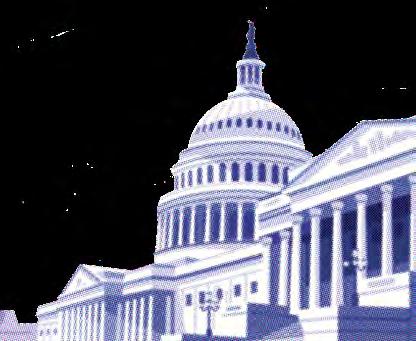
For Grassroots Advocacy Month (GAM) this year, the theme centers on storytelling, specifically exploring what public narrative is, its impact on other groups’ organizing efforts, and how we can develop our narrative to move the needle on our issues.
The concept of public narrative was developed by Marshall Ganz, a former United Farm Workers organizer who now serves as a professor at Harvard’s Kennedy School, where one of his courses is titled “Public Narrative: Leadership, Storytelling, and Action.” From his course description, Ganz describes public narrative as “a way of articulating and communicating values, motivating and inspiring others, and engaging in purposeful action,” and breaks it down into three components: “story of self,” “story of us,” and “story of now.” While public narrative includes components of self-expression, it is primarily “an exercise of leadership by motivating others to join you in action on behalf of a shared purpose,” which is ultimately the goal of NARFE’s advocacy efforts.
The story of self is focused on highlighting what drives you to the purpose you are rallying support for. To develop your “story of self,” Ganz poses questions such as “Why were you called to motivate others to join you in this action?” and “What stories

can you share that will enable others to ‘get you’ to guide you in formulating your talking points?” For this reason, reflect on your connection to the federal community, whether it was your career of service or that of a spouse, parent, etc., and delve into how this connection has fueled you not only to act, but also to lead.
The story of us is crafted using the “values, experiences, or aspirations of your community” that can be appealed to when calling upon others to join you in action. This is the string that connects your individual experience to the broader group, whether it is patriotism and the desire to serve, or a common goal of bettering federal services for those who use them or valuing the efforts of those who did serve by expressing gratitude. Framing this story in a way that establishes a feeling of “us,” that creates a sense of bond or obligation between you, your cause, and those you are appealing to, is key to the success of your subsequent “story of now.”
The final component is the “story of now,” which is meant to be urgent and a direct call to action. The urgency can be created by threat or opportunity, pointing out either “a vision of the world as it will be if we fail to act” or “the world as it could be if we do act,”

spurring listeners to, ideally, act immediately. The request must be plausible and concise; asking someone to be “for” or “against” a bill, for example, is not concrete, nor does it offer a real solution to a problem. Creating a petition, asking for signatures and recruiting advocates to speak at town halls are strategic actions aimed at reaching the goal. The groundwork laid from the stories of self and us builds the sense of community that we need for our “story of now” to achieve advocacy successes, the ultimate

In recent years, the practice of public narrative has gained popularity, particularly in grassroots efforts, and consequently, there has been an inquiry into its effectiveness.
In a 2023 study on health equity and social justice, a group of researchers investigated
the influence of public narrative and community power on community organizing initiatives, the latter being defined as “the ability of communities most impacted by structural inequities to develop, sustain, and grow an organized base of people
While public narrative includes components of self-expression, it is primarily “an exercise of leadership by motivating others to join you in action on behalf of a shared purpose.”












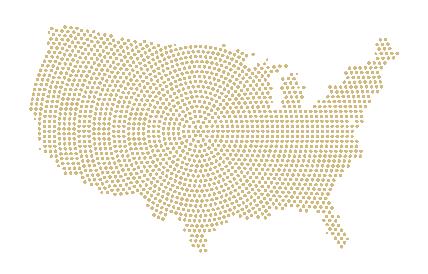

who act together through democratic structures to change systems.” The project analyzed efforts in Cincinnati, Ohio, and Detroit, MI, through interviews with key leaders in the communities, specifically to understand the link between “personal and collective experiences to pressing social issues.” From 35 interviews, the authors gathered data that affirmed the positive impact of public narrative practices by asking the leaders about “their general experience with community organizing, local issues that they had worked on, and narratives relating to those issues,” identifying stories of “self”, “us”, and “now” throughout questioning. To emphasize the impact of utilizing public narrative in advocacy, the “story of now” is most relevant in analyzing success.
In the Detroit study, where the initiative focused on addressing neighborhood issues stemming from concentrated poverty, participants successfully secured a freeze on water shutoffs during the COVID19 pandemic by highlighting the impact of poor water sanitation on the community. This created a sense of urgency for the problem and offered a specific, reasonable solution. Detroit leaders shared their stories of “self” and “us” through the lens of protecting their community in desperate times, emphasizing that “water is a necessity when we need to stay home and protect ourselves and others.” Still, if water at home is shut off, people must obtain it by going to get bottled water, opening “an opportunity for disease to be spread.” By framing the stories as consequential to everyone, which is therefore detrimental to the greater community, and escalating further to being harmful on a global scale during a pandemic, it becomes challenging to overlook your obligation to act.
The same practices were applied in Cincinnati, where the organization renewed a long-standing battle to remove a law enforcement gun range from a Hamilton County neighborhood, citing the harmful effects the range was having on school children during the pandemic. Telling the stories of children, already traumatized by a nationwide outbreak of disease that altered their entire way of life—being unable to attend class without hearing around 2,400 gunshots a week— was highly motivating on its own. Paired with the broader implications of mental health and long-term costs and effect on the ability of children to succeed (e.g. failing classes and therefore not becoming contributing members of society, turning to negative alternatives to make ends meet, etc.), the case was made on the story of “now,” and the county just last year allocated $15 million to move the range.
While it may take time, making individual stories surrounding an issue available to the public and relevant decision-makers forms connections. Once the stories come together to show a significant impact on a community, an obligation to acknowledge the issue becomes apparent. And then creating a sense of urgency through highlighting the costs of ignoring the problem, as well as offering well-thought-out solutions, makes inaction unthinkable. NARFE wants its advocates to be not only armed with district data and cost analyses but also to have the ability to weave together a story that no one can deny. We have laid out how you can utilize public narrative to craft your own.
For many, even the most seasoned advocates, formulating a concise, practical, and informative story to advance NARFE’s legislative priorities can be a daunting task. You may only have a brief conversation with a member of Congress or their staff,
Using the concepts of public narrative, NARFE has developed a set of questions you can draw from when crafting your own stories of self, us, and now to share in these interactions.
and therefore, being able to relay why you care, why others should care, and why we should act now in a potentially short window is a critical skill to develop for grassroots efforts. Using the concepts of public narrative, NARFE has developed a set of questions you can draw from when crafting your own stories of self, us, and now to share in these interactions.
• What is your connection to the federal community?
• How has your service/the service of the federal community impacted you?
• Is your “identity” tied to the federal community? In what ways?
• How has advocating for yourself transformed your lifestyle? What realizations have you had in these efforts?
• How is the rest of the country impacted by the service of the federal community?
• What struggles are collectively shared by the community? What dreams?
• Who is/should be held accountable in supporting federal employees and retirees?
• How has NARFE advocacy work impacted your relationship(s) within the community?
• What are the consequences for the country when lawmakers do not support the federal workforce?
• How does the lack of support negatively affect public servants?
• How long do we have to outline alternative solutions to a reduced federal workforce before operations cease?
• What solution(s) do we offer proactively for lawmakers and other decision-makers to address our issues?
Stories connect us. They turn strangers into friends and the apathetic into our allies.
NARFE encourages you to articulate your own stories of self, us, and now in your efforts to advocate, and reminds you that we are always here to uplift your narratives.
—NICOLE BLACKSTONE IS NARFE’S GRASSROOTS & POLICY MANAGER



Call TODAY for a
• Temporary Continuation of Coverage
• Conversion policies
• Voluntary Early Retirement Authority
• Discontinued Service Retirement
• Spousal coverage • Marketplace coverage • Medicaid
Upon termination, they receive a 31-day extension of Federal Employees Health Benefits (FEHB) coverage at no cost, beginning after the last day of the pay period in which they separate from service. This grace period allows former employees to evaluate available options and choose the best coverage for their needs: Programs managed by the Office of Personnel Management (OPM):
• Temporary Continuation of Coverage
• Conversion policies
• Voluntary Early Retirement Authority
• Discontinued Service Retirement Other options:
• Spousal coverage
• Marketplace coverage
• Medicaid
If a federal employee’s termination is not due to gross misconduct, they qualify for Temporary Continuation of Coverage (TCC) for up to 18 months after separation. TCC is the federal government’s version of COBRA, which allows former employees who lose their employer-sponsored health benefits to continue coverage under their existing plan.
TCC does not include a government premium contribution, so enrollees must pay the full premium plus a 2% administrative fee, significantly increasing costs. For example, an active federal employee pays $657.82 per month for the popular Blue Cross Blue
Shield Basic plan with self-and-family enrollment. Under TCC, the same plan costs $2,249.43 per month— an increase of $1,591.61. While the higher premium may be a financial challenge, the key advantage of TCC is that it allows former employees to keep their existing FEHB plan with the same benefits, access to doctors and prescription drugs, and completed preauthorization steps.
Former employees opting for TCC can adjust their enrollment category (Self, Self-Plus-One, or Self-andFamily) and select any FEHB plan available in their area. Those struggling with the higher cost of their current plan may want to explore lower-premium alternatives. For instance, the BCBS FEP Blue Focus plan under TCC costs $1,236.93 per month for Selfand-Family coverage—about $1,000 less per month than BCBS Basic. Choosing a more affordable plan could help ease the financial burden during this transition period.
Your human resources office must notify you of your eligibility for Temporary Continuation of Coverage (TCC) within 61 days after your regular FEHB enrollment ends. You then have 60 days from the date of notification or 60 days from your separation—whichever is later—to enroll in TCC. Then, you will receive a monthly premium bill from your employing office.
To prevent a loss in health insurance coverage, former employees interested in TCC should enroll during the free 31-day extension period.
MAKE CHECK PAYABLE TO: NARFE
PLEASE MAIL COUPON AND CHECK TO:
NARFE / 606 N. Washington St. / Alexandria, VA 22314 or donate online at www.narfe.org/ donate
With NARFE’s thanks, you will receive a NARFE Photo Calendar
NARFE safeguards the earned pay and benefits of America’s five million federal workers, retirees, their spouses, and survivors. NARFE is YOUR legislative voice and tireless advocate.
NARFE contributions are NOT tax-deductible.
Enclosed is my NARFE Contribution: $ __________________ All donations go to the NARFE General Fund to support NARFE Programs and operations.
Name:
Address:
Credit Card Information: q M/C q VISA q Discover q AMEX
Card Number:
Expiration Date: (mm)/ (yy) Security Code:
Signature: Date: / /
Name: (please print)
NARFE members contributed for Alzheimer’s research: $17 Million Fund $16,684,434.37
*Total as of May 31, 2025 All contributions go directly to Alzheimer’s research, with the exception of funds given to the Walk to End Alzheimer’s or The Longest Day.
If you have any questions, write to:
National Committee Chair
Olivia Williams PO Box 2175 Columbia, SC 29202
OR E MAIL: oeashf3@gmail.com
MAKE CHECK PAYABLE TO:
NARFE-Alzheimer’s Research (w rite your chapter number on memo line)
PLEASE MAIL COUPON AND CHECK TO:
Alzheimer’s A ssociation 225 N. Michigan Ave., 17th Floor Chicago, I L 60 601-7633
Your charitable contribution is tax-deductible to the fullest extent allowed by law.
Enclosed is my NARFE-Alzheimer’s contribution: $ Every cent that is contributed is used for research.
Name:
Address:
City:
State: ZIP:
Chapter number:
Credit Card Information: q M/C q VISA q Discover q AMEX
Card Number:
Expiration Date: (mm)/ (yy) Security Code:
Signature: Date: / /
Name: (please print)
The NARFE-FEEA Fund supports NARFE members during disasters; provides scholarships to their children, grandchildren and great-grandchildren; and funds other programs to support NARFE members at the direction of NARFE and FEEA.
MAKE CHECK PAYABLE TO: NARFE-FEEA Fund
PLEASE MAIL COUPON AND CHECK TO: FEEA
1641 Prince St. Alexandria, VA 22314
Your charitable contribution is tax-deductible to the fullest extent allowed by law.
Enclosed is my NARFE-FEEA Fund Contribution: $ ________
Name:
Address:
City:
State: ZIP:
Email:
Early retirement offers apply both to the Civil Service Retirement System (CSRS) and the Federal Employees Retirement System (FERS). Employees must meet the following criteria to qualify for early retirement:
Minimum age and service
Have served in a position covered by the OPM authorization for the minimum specified time (usually 30 days prior to the date of the agency request)
Serve in a position covered by the agency’s VERA plan
Leave federal service when the early retirement option is available for your agency
During the 31-day extension period, individuals can request a guaranteed-issue conversion policy from their current FEHB carrier. Conversion policies come with different benefits and rates compared to FEHB, and they do not require health screenings, impose waiting periods, or exclude pre-existing conditions.
You might consider a conversion policy if:
• You are not eligible for coverage under TCC.
• You choose not to enroll in TCC.
• Your TCC coverage has ended.
To explore your options and enroll, you must contact your FEHB carrier within 31 days of losing coverage eligibility. While this option is part of OPM’s FEHB policy and is listed as an option in plan brochures, it’s not widely used today. That’s because the Affordable Care Act (ACA) marketplace has the same consumer protections against coverage denial and offers more choices.
Voluntary Early Retirement Authority (VERA)
Federal agencies that have requested and been approved for Voluntary Early Retirement Authority
(VERA) may offer this option to their employees. OPM approval specifies how long it remains available. Early retirement offers apply both to the Civil Service Retirement System (CSRS) and the Federal Employees Retirement System (FERS). Employees must meet the following criteria to qualify for early retirement:
1. Minimum age and service:
• At least age 50 with at least 20 years of creditable federal service, or
• Any age with at least 25 years of creditable federal service
2. Have served in a position covered by the OPM authorization for the minimum specified time (usually 30 days before the date of the agency request)
3. Serve in a position covered by the agency’s VERA plan
4. Leave federal service when the early retirement option is available for your agency Employees retiring through VERA are eligible to continue FEHB coverage in retirement as annuitants if they’ve had FEHB coverage for the last five years or for the entirety of their FEHB eligibility. Employees are not required to be in the same plan to satisfy the five-year rule, but they must have been consistently enrolled in any FEHB plan over the course of the last five years. Federal annuitants receive the
Former employees opting for Temporary Continuation for Coverage (TCC) can adjust their enrollment category (Self, Self-Plus-One, or Self-and-Family) and select any FEHB plan available in their area.
same government premium contribution as active employees, but annuitants lose the ability to pay for FEHB premiums on a pre-tax basis.
This applies to employees who are separated involuntarily, where the most common causes are a reduction in force or the office’s location is moved outside the original site’s commuting area.
To qualify for a DSR, you must meet the same age, service, and five-year continuous FEHB coverage requirements as VERA. Those who do are eligible to continue FEHB in retirement as annuitants,


receiving the same government-premium contribution as active employees.
Losing your current health insurance is considered a qualifying life event, allowing you to join a plan outside the standard open enrollment period. However, you must apply within 30 days of losing FEHB coverage. If your spouse has access to employer-sponsored health insurance, it’s likely the most cost-effective way to maintain coverage. While there could be differences in the generosity of benefits from a spouse’s plan compared
NEW! Retractable banners available
- Quick and easy to set-up
- Packs down easily
- Attractive silver hardware
- Table-top version measures 11”w x 19”h
- Floor version measures 60”w x 83”h






NARFE Merch
- Table coverings for events and health fairs
- Polo shirts/t-shirts/jackets/ poplin shirts
- Bumber stickers/lapel pins/ auto magnets
- Mugs/tumblers/license plate frames/pens
- Chapter and Federation Officer Badges
- Cooler tote bags
NARFE.org/shopnarfe
to FEHB plans, most employers cover a significant portion of the total premium, helping to keep costs manageable.
Losing health insurance also qualifies you to enroll in marketplace coverage under the ACA outside of the standard open enrollment period.
The marketplace options available to you will depend on where you live—some insurance plans are only offered in certain parts of a state. To learn more about your choices, go to healthcare.gov.
Unlike FEHB, where premiums are determined by enrollment type (Self, Self-Plus-One, or Self-andFamily), premiums in most state marketplaces vary based on factors such as age, family size, geographic location, and tobacco use. Health plans in the marketplace are categorized into tiers, which reflect both premium costs and the generosity of benefits:
• Bronze plans offer the lowest premiums but require members to pay more out-of-pocket for healthcare services.
• Platinum plans have the highest premiums with the lowest out-of-pocket costs.
• Silver and Gold plans fall in between, attempting to balance cost and coverage.
Depending on your income, you may qualify for assistance for a marketplace health plan. Premium tax credits are subsidies in which the federal government pays a portion of your monthly premium and are available to many individuals and families, even those with moderately high incomes. Some households also qualify for special Cost-Share Reduction plans that
lower the amount you need to pay out-of-pocket when you get care.
Let’s look at an example: A four-person family living in Montgomery County, MD, with an estimated annual income of $125,000 would qualify for a premium tax credit of $418 per month, or $5,016 per year.
To qualify for coverage, you must meet the following requirements:
• Do not have access to an employer-sponsored plan that meets minimum value standards and is considered affordable. For 2025, a plan is considered affordable if the premium does not exceed 9.02% of your household income.
• Not be eligible for Medicaid, Medicare, or the Children’s Health Insurance Program (CHIP).
• Be lawfully present in the United States.
• If married, file a joint tax return.
• Meet specific income requirements, which vary based on location, age, and household size.
There are two ways to receive your premium tax credit: When you apply through the marketplace, you can either choose to receive the full amount when you file your federal income tax return, or you can have a portion of the credit paid directly to your insurance carrier each month, lowering your monthly premium. For example, if you enroll in
If your spouse has access to employer-sponsored health insurance, it’s likely the most cost-effective way to maintain coverage.
You can have a portion of the credit paid directly to your insurance carrier each month, lowering your monthly premium.
coverage from July through December and are eligible for a $600 tax credit, you could apply $100 per month toward your premiums.
If you choose to have your premium tax credit applied to your health plan each month, it’s essential to estimate your income carefully. Advance premium tax credits are based on projected annual income, since your actual earnings won’t be finalized until the end of the year. If you underestimate your income, you may have to repay some or all of the excess tax credits when you file.
Laid-off federal employees considering marketplace coverage during this transition period may want to avoid taking the premium tax credit upfront. Any unused premium tax credits can be claimed later when you file your federal tax return.
There are two ways to receive your premium tax credit
When you apply through the marketplace, you can either choose to receive the full amount when you file your federal income tax return.
Enhanced premium tax credits are currently set to expire at the end of 2025. If Congress does not renew them and President Trump does not sign an extension into law, individuals enrolled in ACA marketplace plans will face higher premiums.
Individuals with income up to 400% of the Federal Poverty Level (FPL) will still qualify for premium tax credits, but the subsidy amounts will be reduced. Those with income at or above 400% of the FPL would lose eligibility for premium tax credits altogether.
FEHB?
When it comes to benefits, FEHB generally offers more comprehensive coverage than marketplace plans. Services such as bariatric surgery, adult dental care, hearing aids, foot care, and routine care while overseas are typically included in some FEHB plans, but are often not covered at all under marketplace options.
Additionally, marketplace plans—depending on their tier— tend to have much higher deductibles. It’s common to see Bronze plans exceed $7,000 per person and Silver plans surpass $4,000 per person, which is significantly higher than the deductibles found in most FEHB plans. Gold and Platinum plans have
During the 31-day extension period, individuals can request a guaranteed-issue conversion policy from their current FEHB carrier. Conversion policies come with different benefits and rates compared to FEHB, and they do not require health screenings, impose waiting periods, or exclude pre-existing conditions.
Unlike FEHB, where premiums are determined by enrollment type (Self, Self-Plus-One, or Self-andFamily), most state marketplace’s premiums vary based on factors such as age, family size, geographic location, and tobacco usage.
lower deductibles, which are more in line with FEHB, although they have higher monthly premiums.
Medicaid is a health insurance program for low-income Americans, jointly funded by both the federal government and individual states. Because states administer their own Medicaid programs and contribute to their funding, eligibility rules vary. Common factors include income, age, disability status, pregnancy, household size, and the applicant’s role within the household.
Retirement information from OPM: opm.gov/ retirement-center/quick-quide/
FEHB information from OPM: opm.gov/ healthcare-insurance/healthcare/
NARFE Federal Benefits Institute: narfe.org/ federal-benefits-institute
State marketplace and Medicaid information: healthcare.gov
If your income is 200% below the FPL, you may qualify for Medicaid. To learn more about your eligibility and available options, visit your state’s Medicaid website or healthcare.gov.
Laid-off federal employees have several options to maintain health insurance coverage, though most involve higher premiums. If you’re married and your spouse has access to employer-sponsored health insurance, enrolling in their plan is often the most cost-effective option.
For those without that choice, it’s important to explore marketplace plans available in your state and compare them to FEHB plans offered through TCC. While you should expect higher premiums under both options, marketplace plans may be more affordable if you qualify for premium tax credits, whereas FEHB plans may offer more comprehensive benefits.
—KEVIN MOSS IS A SENIOR EDITOR WITH THE GUIDE TO HEALTH PLANS FOR FEDERAL EMPLOYEES PROVIDED BY CONSUMERS’ CHECKBOOK. LEARN MORE ABOUT THE GUIDE AT GUIDETOHEALTHPLANS.ORG. NARFE MEMBERS RECEIVE A 20% DISCOUNT ON THE GUIDE BY USING THE PROMO CODE 20NARFE.


Did you know that NARFE rewards our members for recruiting new members? Think of it as a special thank you from Headquarters for increasing our numbers and voices.
• Recruiter’s Membership ID must be included on each application.
• To receive the Fall Membership Recruitment Drive credit, all envelopes must be postmarked on or before December 31.
HOW DOES THIS AWESOME INCENTIVE WORK?
January-August
• Recruiter receives $8 for any new (never joined) active federal employee enrollment only
September-December Fall Membership Recruitment Drive
• Recruiter receives $10 for new enrollment (any member type—active or retired federal employee)

• Top Performers from the Fall Membership Recruitment Drive will be announced in the NARFE Magazine (March Edition) with prizes to be announced.
New members can join by:
• Mailing in the application from the F-135 brochure
• Going online to narfe.org/join
• Calling us at 800-456-8410 Ext 1, Monday through Friday, 8 a.m. to 5 p.m. EST.
• Mailing in the application that appears in every issue of NARFE Magazine

At LECcon25, NARFE’s premier grassroots training event, NARFE members learned to advocate for NARFE’s legislative priorities and be an active participants in protecting and defending their federal benefits.

“I had the honor and privilege of speaking with Representative Sarah McBride today, as well as staffers from Representative Eleanor Holmes Norton, Senator Chris Coons, and Senator Lisa Blunt Rochester, as part of NARFE’s (National Active and Retired Federal Employees Association) LegCon25.
It was so great to hear the wholehearted support from Representative McBride and others for protecting the merit-based civil service! It is a difficult time for federal employees these days with widescale reductions in force, attempts to pull back benefits, and moves to politicize the civil service and make it easier to fire federal employees through the new version of Schedule F (Schedule P/C).
Attacks on the civil service not only hurt employees that have committed their lives to public service, but also have negative effects on all of us as our social services are diminished. Hopefully we can spread the message far and wide that gutting the civil service will negatively affect all of us near and far and will have long-standing impacts that will be hard to recover from and rebuild.
—Lauren Baker, NARFE Member

—Mary Andres, Chapter 0262 Metro Louisville “
I was impressed with the event. It was organized and easy to participate.



Nati o n al Acti ve an d Reti red F ed eral Emp l o yees
Asso ci ati o n
Nat i onal Act i ve and Ret i r ed Feder al Em pl oyees LEG con 2025
227
Congressional Meetings


225
Attendees

46 States and DC Represented 99% Meetings Confirmed
Nati o n al Acti ve an d Reti red F ed eral Emp l o yees L EG co n 2025 O vervi ew
227 conf ir m ed m eet ings
99% m eet ings conf ir m ed
16 m em ber - level m eet ings
225 at t endees
46 st at es and DC r epr esent ed
87 Senat e m eet ings
140 House m eet ings
117 Dem ocr at of f ices
108 Republican of f ices
2 I ndependent of f ices



ou’ve done everything right with your Thrift Savings Plan (TSP) beneficiary designations, ensuring they align with your estate planning goals. But what about the bank accounts, brokerage accounts held outside of a retirement plan, or the CDs you’ve laddered as an emergency reserve? In my May 2024 NARFE column, I wrote about some of the recent changes and quirks to the TSP’s beneficiary rules. This month and next, we’ll discuss how you can establish beneficiaries for your non-retirement accounts to ensure a smooth transition.
While federal employees often have their TSP and other retirement plan beneficiary designations all squared away, personal financial accounts frequently get overlooked in estate planning. That’s where Payable on Death (POD) and Transfer on Death (TOD) designations come into play, offering the same probateavoiding benefits for your personal assets that are embedded in the TSP and other retirement accounts.
These simple designations can transform how your loved ones access your personal accounts after you’re gone. Instead of waiting months for probate court proceedings, your designated beneficiaries can typically access funds within days of your death, often with nothing more than a death certificate and proper identification.
However, like any estate planning tool, POD and TOD designations come with both advantages and important limitations that every federal employee should understand before implementing them.
Think of POD and TOD designations as beneficiary forms for your accounts; both transfer ownership directly to named beneficiaries upon death, bypassing the probate process entirely. POD applies to bank products, such as checking, savings, CDs, and money market accounts. TOD applies to investment accounts, such as brokerage accounts and securities held outside of retirement plans.
With POD/TOD designations, you maintain complete control during your lifetime, spending freely, changing beneficiaries, or revoking designations. Beneficiaries have no rights until your death, when accounts transfer automatically, similar to how your TSP passes to designated beneficiaries.
This is a significant advantage over the common mistake of adding adult children as joint owners to avoid probate. Joint ownership gives children immediate access to your funds, exposes your money to their creditors and potential divorces, and can create gift tax complications. POD/TOD designations provide the same
probate avoidance without these risks.
Probate is the courtsupervised process of validating a will, paying debts, and distributing assets after death. While necessary for some assets, probate has some drawbacks for your heirs. For starters, the process can take months, even for straightforward estates, and longer for complex situations or contested wills. Attorney fees, executor commissions, court costs, and appraisal fees can substantially reduce what your heirs ultimately receive. Additionally, probate is a public process where all details of your estate, including asset values and beneficiaries, become part of the public record. If you own property in multiple states, your heirs may face multiple probate proceedings in different jurisdictions. Furthermore, executors and heirs often face logistical challenges settling an estate when they live far from where the deceased resided, frequently requiring multiple trips and hiring a local attorney to navigate the process.
Beyond simplifying transfers, POD/TOD designations offer an additional benefit: expanded FDIC coverage for your bank deposits. Under rules effective April 1, 2024, trust deposits (including POD accounts) are insured up to $250,000 for each unique eligible beneficiary, capped at a maximum of $1,250,000 per owner. For example, an account with two POD beneficiaries
NARFE OFFERS MEMBERS a wide range of information on federal benefits. Visit www.narfe.org/federal-benefits-institute
receives $500,000 in total coverage; three beneficiaries get $750,000; and five or more beneficiaries reach the maximum $1,250,000 coverage.
For federal employees approaching retirement with significant personal savings, POD designations can provide peace of mind for larger account balances that might otherwise exceed the standard $250,000 FDIC limit.
Setup is typically straightforward. Most financial institutions offer simple forms that can be completed online or in person. You’ll need to provide basic identifying information for each beneficiary and the percentage each should receive if naming multiple people. Unlike more complex estate planning tools, POD/TOD designations generally don’t require attorney
Do you have the NARFE Visa®
assistance, though consultation is always recommended to ensure they fit with your overall estate plan.
Next month, we’ll explore important limitations of POD/TOD designations, how to coordinate them with your overall estate plan, and introduce Transfer on Death Deeds for real estate.
MARK A. KEEN, CFP®, PARTNER, KEEN & POCOCK. SECURITIES OFFERED THROUGH THE STRATEGIC FINANCIAL ALLIANCE, INC. (SFA), MEMBER FINRA/ SIPC. ADVISORY SERVICES OFFERED THROUGH STRATEGIC BLUEPRINT, LLC AND THE STRATEGIC FINANCIAL ALLIANCE, INC. MARK KEEN IS A REGISTERED PRINCIPAL OF SFA AND AN INVESTMENT ADVISOR REPRESENTATIVE OF SFA AND STRATEGIC BLUEPRINT, LLC. SFA AND STRATEGIC BLUEPRINT ARE AFFILIATED THROUGH COMMON OWNERSHIP BUT OTHERWISE UNAFFILIATED WITH KEEN & POCOCK. NEITHER STRATEGIC BLUEPRINT NOR SFA PROVIDE TAX OR LEGAL ADVICE.
Apply for your NARFE Visa Platinum credit card today and receive a $25 statement credit1 towards your next purchase!
More reasons to keep the NARFE Visa Platinum credit card at the top of your wallet:
» Earn six (6) points per $1.00 spent on all streaming services, and one (1) point per $1.00 spent on all other purchases2
» No annual fee, no balance transfer fees, no cash advance fees, and no foreign transaction fees3
» Credit limits up to $25,000


» Protect your card with Visa Secure and Visa Secure Remote Commerce (SRC)
1 $25 Visa statement credit applies to new applicants only. The credit expires after six months if it is not used. All loans are subject to credit approval.
2 There is a 60-point monthly cap on streaming services.
3 Other fees such as late fees, returned check fees, and an over-the-limit fee may apply. For the full list of fees SFCU charges, please visit SignatureFCU.org/FeeSchedule. Annual Percentage Rate (APR) ranges from 12.99% - 18.00%. Rates, terms, and conditions may vary based on credit worthiness and qualifications. Your actual APR will be determined at the time of application and will be based on your application and credit information. Not all applicants will qualify for the lowest rate. Rates are set by the Board of Directors and may change without notice.
Ready to get started?
Scan the QR code to your left, visit SignatureFCU.org/NARFE to apply today, or contact our Member Services Department at (800) 336.0284 ext. 684 to get started today.
Not a member of SFCU? Open your account today at SignatureFCU.org/JoinNow
Signature Federal Credit Union (800) 336.0284 newaccounts@signaturefcu.org
FOLLOW US /SignatureFCU


In an expansion of its presence on Meta, NARFE is creating and posting content to reach the federal workforce audience using Instagram. Telling NARFE’s story on the third most popular social media application after Facebook and YouTube positions the organization for continued awareness and brand recognition for the future. Follow NARFE on Instagram at https://www. instagram.com/narfehq/
We’ve received several requests over the past year or so about signs that people can use for tabletop displays and exhibiting, and they are finally here! We have two new signs in ShopNARFE available for purchase now. You can navigate to this page directly from the home page, narfe.org, then click on “About NARFE –ShopNARFE.” Find ShopNARFE at www.narfe. org/shopnarfe .
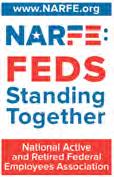
For NARFE leaders and members attending rallies to protest executive actions against the federal workforce or potential congressional action to cut earned federal retirement and health benefits, we have designed sign templates that you can use to create signs at your local print shop. You can easily download our 11x17 or 18x24 poster templates at https://www.narfe.org/officerresources/membership-officer-resources/narfemembership-recruitment-resources/. Good luck and thank you for your advocacy!
Protect Democracy has introduced a new resource for federal employees who receive questionable orders that include threats of termination for non-compliance. “The Resign or Be Fired?” explainer guide provides essential information about your rights, what you are entitled to, and the appropriate rules and regulations related to such demands. For more details, please view https://protectdemocracy. org/wp-content/uploads/2025/03/Resign-or-BeFired-Explainer.pdf .

Stillwater, Oklahoma, NARFE member Robert “Bob” Lowrey was honored in April as a 2024 Oklahoma Native American Elder during AARP’s Celebration of Native American Elders. Lowrey was nominated for the honor by the local NARFE chapter. He has served in multiple positions with NARFE in his local chapter and on the Oklahoma Federation Executive Board. Congratulations Robert!
A coalition of good government organizations and federal unions has launched an initiative called “Rise Up,” a network of thousands of lawyers who will offer free legal support to employees impacted by the
Information as of June 11, 2025.
REGION X: conference October 20-23, Staybridge Suites, Pigeon Forge, TN. Please contact Region X Vice President Robert Allen, rvp10@narfe.org, for more information.
ALASKA: virtual federation annual meeting Sept. 27. Please contact Federation Secretary David Epstein, dave1013@gmail.com, for more information.
FLORIDA: federation election August 19-31. Please Federation President Evelyn J. Seabrook, brooklyn_ seav48@hotmail.com, for more information.
ILLINOIS: annual federation conference and election Sept. 16-17, Thelma Keller Convention Center, Holiday Inn, Effingham, IL 62401. Please contact Corresponding Secretary Linda Glasgow, glasgowljg43@aol.com, or visit www.narfe.org/il/ for more information.
INDIANA: annual federation conference, September 24-25, 2025, Hilton Garder Inn 5255 Noggle Way

Indianapolis, IN 46237. Please contact Federation President John Triplett, email johntriplettnarfe@gmail. com.
IOWA: conference and election September 16-17, Meskawki Casino & Conference Center, Tama, Iowa. Please contact Federation President Droman Otte at 515-971-0290 or email dormanotte@gmail.com.
NEW HAMPSHIRE: 54th annual conference, October 29, 2025, Governor’s Inn, 78 Wakefield St, Rochester NH 03867. Please contact Joseph J. Kowalik III, 603485-2082 or email jjkowalik3@gmail.com.
REGION III REGIONAL TRAINING CONFERENCE: conference October 10-12, Saint Simons Island, GA. Please contact Region Vice President Lynn Harper, 478-951-3260 or email lynnlarry79@outlook.com
WASHINGTON STATE ANNUAL MEETING October 28, 2025, virtual. More information to come.
For the complete list, visit https://www.narfe. org/2025-chapter-conferences-and-meetings/.

www.armyresidence.com/lakeside-duplexes



NARFE’s 2025 Photo Contest brought in hundreds of wonderful photographs from NARFE members. Narrowing the selection from several hundred photos was a tremendous effort this year, but the result is a magnificent 2026 NARFE Calendar, which is being distributed during NARFE’s fundraising efforts this year. Check next month’s issue for details on entering 2026 Photo Contest.

Cover: “U.S. Navy Blue Angels Perform at the Great Colorado Air Show,” Gregg Schuster, Arvada, CO, National Member.
January: “Martin Luther King, Jr. Memorial, Washington, D.C., Ronaldo Dizon,” Las Vegas, NV, Chapter 423.
February: “Sunrise in Monument Valley, Navajo Tribal Park on the Utah/Arizona Border,” Rodney Hendrickson, London, KY, Chapter 1249.
March: “Trail Horses in a Pasture at Pine Butte Preserve, Montana,” Linda Granzow, Mesa, AZ, National Member.

April: “Crocus Flowers Bloom at the Base of a 100-year-old Oak Tree, New York,” Kenneth Sendlein, Valley Stream, NY, Chapter 0471.
May: “Water Reflecting Mt. Shuksan, North Cascades National Park, Washington,” Ted Genengels, Seabeck, WA, National Member.
June: “Double Arch, Arches National Park, Utah,” Belinda Huff, Lexington, KY, National Member.
July: “Grand Prismatic Spring, Yellowstone National Park, Wyoming,” Michael Holloway, Cincinnati, OH, National Member.
August: “Dignity of Earth and Sky Sculpture at the Lewis & Clark Welcome Center, South Dakota, Phyllis Maguire, Wesley Chapel, FL, Chapter 0390.
September: “The Holzwarth Historic Site: A Story of Immigration, Innovation, Assimilation and the American Dream, Colorado,” George Gootee, Bowling Green, KY, National Member.
October: “Fall on Pumphouse Trail, Pennsylvania,” Clark D. Guy, Somerset, PA, National Member.
November: “Celebrating Fall at the Morton Arboretum, Illinois,” Richard Boice, Downers Grove, IL, Chapter 1771.
December: “Christmas at the Capitol, Washington, D.C.,” Ed Miron, Fort Collins, CO, Chapter 256.
Like what you see above? The 2026 NARFE Calendar will be sent to select NARFE members later this month. You can get ahead of the crowd and reserve your copy with a small donation to NARFE. Remember, your contributions support NARFE’s important advocacy and education initiatives on behalf of all federal employees and retirees. Visit www.narfe.org/reserve-calendar to make your gift today! Allow 6 to 8 weeks for delivery.
What is dues withholding?
It is a dues-payment method available to retired NARFE members, their spouses and annuitant survivors giving them the option to have their annual NARFE membership dues deducted from their annuities each month.
Advantages
• Save more than 10% off your annual NARFE dues
• Sign up your spouse and double your savings
• You’ll never get another dues reminder from us
• Your monthly payment is affordable and convenient
• You may cancel your dues withholding at any time
How does it work?
One-twelfth of your total dues is automatically deducted from your monthly annuity. Your monthly deduction is determined by the following formula: ($42 NARFE dues ÷ 12) + (Chapter dues - if applicable ÷ 12) = total monthly deduction
How do I sign up?
Complete the Dues Withholding Application below. Send no payment. It may take 60 to 90 days before auto-deduction starts. Your membership starts as soon as your application is received. To learn more about dues withholding, call 800-456-8410
STOP! Complete this section ONLY if you are signing up for Dues Withholding. If so, DO NOT send payment
o YES. I want to enroll in NARFE’s Dues Withholding Program. NARFE dues of $42* and chapter dues, if applicable, to be withheld annually. (*Dues-withholding members save more than 10% off the regular NARFE dues rate.)
Social Security Number (9-digit number)
–
o Mr. o Mrs. o Miss o Ms.
Full Name
Street Address
Apt./Unit City State ___________ ZIP
Phone (__________)
Date of Birth _________ /_________ /
Civil Service Annuity Number
S
– –
(Include prefix, CSA or CSF) (Include any applicable suffix)
NARFE MEMBERSHIP INFORMATION
NARFE Membership ID
NARFE Chapter Number
o YES. I also authorize my (NARFE member) spouse’s dues to be withheld from my annuity. (Additional annual dues of $42 and chapter dues, if applicable, to be withheld annually. If YES, enter spouse’s information below.)
Spouse’s Name
Spouse’s Membership ID
Spouse’s Email
AUTHORIZATION (Withholding will begin in 60-90 days). Send NO PAYMENT with Dues Withholding Application!
I authorize the United States Office of Personnel Management to make appropriate deductions from my annuity payments, not to exceed the amount certified by the National Active and Retired Federal Employees Association as the amount of dues for which I am annually obligated, in accordance with elections I made above, and to pay the deducted sum to the National Active and Retired Federal Employees Association (NARFE). This authorization shall also apply to any and all dues changes certified by NARFE membership in accordance with elections I made. Please allow 60-90 days for processing.
I understand that this authorization shall be valid until NARFE receives and processes my written notice of cancellation in accordance with its agreement with the Office of Personnel Management and that any disputes regarding this authorization shall be a matter between NARFE and myself. I hold the Office of Personnel Management harmless for any erroneous allotment deduction made pursuant to this authorization.
Signature of Annuitant or Survivor-Annuitant
Date
Dues payments and gifts or contributions to NARFE are not deductible as charitable contributions for federal income tax purposes.
Trump administration’s recent actions to overhaul the federal workforce. For more information on Rise Up: Federal Workers Legal Defense Network, visit workerslegaldefense.org. Federal workers looking for legal support can begin the process at https:// workerslegaldefense.org/federal-workers.
Even with careful planning, federal employees facing recent layoffs can find themselves in a vulnerable financial position. Unplanned, out-ofpocket expenses can lead to significant hardship, potentially forcing them to rely on high-interest loans, default on debts, or even consider personal bankruptcy. While FEEA can’t replace lost income on a long-term basis, we can offer eligible federal employees confidential, no-fee, no-interest loans to help temporarily with basic needs. Since 1986, FEEA has provided over 13,000 no-fee, no-interest loans to help feds make ends meet during hardships, and we’re here to support those recently affected by layoffs. For more information, visit https://feea.org/ our-programs/layoff-loans/.


NARFE Membership Marketing Specialist Kyeba Jackman with NARFE member Mary Goldwag during the Washington Nationals game on May 7 during Public Service Recognition Week. Thank you, Mary, and all D.C. region NARFE members for joining us for a day at the ballpark!

Eugene Chapter 79 members Ruthann Couch, president of the Oregon Federation, and Diana Bus at a Hands Off! Rally in Eugene, OR, on April 5. Like many of these protests in April, there was a good turnout of protestors supporting federal workers. Thank you, Ruthann for your ongoing advocacy!
—BY MATT SANDERSON, CONTENT MANAGER

Did you recently join NARFE and looking for a way to get involved with local feds in your community? Are you missing the friends you used to work with every day in the office? Find a local chapter convenient to you!
Visit www.narfe.org/chapters to find the chapter that’s right for you, and then call us between 8 a.m.-5 p.m. ET at 800-456-8410. Then dial 1 for membership and we’ll get you signed up right away.


The only organization dedicated solely to protecting and preserving the benefits of all federal workers and retirees, NARFE informs you of any developments and proposals that affect your compensation, retirement and health benefits, AND provides clear answers to your questions.
If your future security is tied to federal retirement benefits—federal retirees, current employees, spouses and individual survivors—you should join NARFE. Membership expiring? Renew now!
• Understand benefit changes and key aspects to stay on top of with NARFE’s monthly webinars, held on a variety of topics such as Thrift Savings Plan, health insurance options and long term care insurance updates
• Direct access to Federal Benefits Institute experts who can answer your most pressing questions and help you get answers you need from OPM
• Topical and robust articles on new legislation, and topics like car buying tips and finding your path in retirement, and the ever popular Q&A section addressing your most burning benefit questions in NARFE Magazine
• Support from your peers with access to FEDHub, the only national online community for the federal community, and local chapters, where you can meet feds in a neighborhood near you
• Weekly news roundup email called Newsline, with helpful tips and updates from NARFE on the work we are doing to support you
• Discounts on popular national brands with NARFE Perks
• Powerful advocacy and alerts to take action on important legislation pending in Congress and our advocacy team that protects your benefits every day!
o I want to join NARFE for the low annual dues of $48
o Mr. o Mrs. o Miss o Ms.
Full Name
Address
Retirement date (or expected)
I am a (check all that apply)
o Active Federal Employee o Active Federal Employee Spouse
o Annuitant o Annuitant Spouse o Survivor Annuitant
o Please enroll my spouse
Spouse’s Full Name
Spouse’s Email
LOOKING
in the federal community? Go to www.narfe.org/chapters to find a chapter near you.
Are you a new member who wants to receive a FREE one-year chapter membership? Choose one: o Chapter closest to home OR o Chapter #____________
1. Complete this application and mail with your payment to NARFE Member Services / 606 N Washington St / Alexandria, VA 22314-1914.
Membership ID (ID # can be found on cover of magazine)
Verify your chapter dues amount or join a NARFE chapter today by calling 800-456-8410 x1.
To view your current renewal invoice (with chapter dues if applicable), login to narfe.org, click “Member Portal,” then “My Account” and then “My Invoices.” Simply pay online or return this form with the invoice amount.
o Check or Money Order (Payable to NARFE)
o Charge my: o MasterCard o VISA o Discover o AMEX
Card No.
Expiration Date _______/_______ (MM/YY)
Name on Card
Signature
Date TOTAL DUES
$48 annual dues x ________=_________ per person #enrolling total dues
Dues payments are not deductible as charitable contributions for federal income tax purposes.
THANK YOUR RECRUITER Did someone introduce you to NARFE? Please provide their name and member ID.
Recruiter’s Name
Recruiter’s Membership ID




(Previously Office Depot/Office Max)




Use your NARFE Perks and your membership will more than pay for itself!
See how much you can save at www.NARFE.org/memberperks
ADT/Bulldog Security Services | https://bulldogsecurityservice.partnerlinks.io/urns4ejdlhns
Exclusive Offer for NARFE Members: NARFE members can enjoy discounted monthly monitoring rates, $0 installation fees, reduced activation fees, and a $500 equipment voucher for customizing their security and smart home systems with ADT monitoring. Enhance your home security with these exclusive benefits tailored just for you. Select the link for more details and fill out the contact page to speak to a security expert and place your order.
BMG Money | https://www.narfe.org/narfe-perks-for-members/bmg-money/
BMG Money is the better loan solution for federal government employees and retirees who are working on improving their credit scores. Apply in minutes regardless of credit score with instant funding available. All credit scores are encouraged to apply with higher acceptance rates.
GE Appliances Store | Use the link below to start shopping!
Save with NARFE members-only access to the GE Appliances Store! You will enjoy up to 25% off MSRP every day on the latest in high-quality appliances. *Orders can not be shipped to P.O. boxes, APOS, Canada, Puerto Rico, HI, AK or U.S. Territories. https://www.myapstore.com/GEStore/Appliances/Registration?AuthCode=MONARFE21
HP – The Association Member Store | 1-888-678-9620 | www.narfe.org/hp-perk-2024E
NARFE members enjoy exclusive discounts via a private store environment. Save up to an additional 10% on Desktops, Laptops, Printers, and Accessories; and save an additional 5% on Care Packs and Services. Access to exclusive member-only promotions. Simply log on and purchase your options with a dedicated US Sales Support team to assist you. HP has Business Account Managers based in Boise, ID, and Rio Rancho, New Mexico. Call 1-888-6789620, Monday - Friday 7:00am -7:30pm CST.
ODP Business Solutions | 1-800-650-1222 | www.officediscounts.org/narfe
Because you’re a member of NARFE, you now have access to exclusive members only discounts at ODP Business Solutions (previously Office Depot/Office Max). Members save up to 75% off on ODP Business Solutions Best Value list of preferred products and can take advantage of products discounted off the officedepot.com regular prices. Restrictions may apply so visit officediscounts.org/narfe for details. Product and service discounts may no longer be available for in-store purchases.
Purchasing Power | https://www.purchasingpower.com/?domain=narfe
While not a discount program, Purchasing Power is an exclusive purchase program helps members buy brand-name computers, electronics, appliances and furniture via annuity allotment when cash is not an option. No credit check or down payments.
Signature FCU Visa Platinum Card | www.SignatureFCU.org/NARFE
Signature FCU is a full-service, nationwide federal credit union operating since 1970. Membership starts with just a $5 deposit into a standard savings account—no membership fees and no minimum balance requirements to enjoy all the products and services we have to offer, including the NARFE Visa® Platinum Credit Card. This special card gives back to your organization and gives you one point for every $1 you spend to redeem for cash, travel, and merchandise.
Active&Fit Direct | https://www.narfe.org/narfe-perks-for-members/activefit-direct/ Stay active from anywhere for $28/mo. Active&Fit Direct includes 12,200+ Gyms, 9,300+ On-Demand Videos and 1:1 Well-Being Coaching. A fitness program with no annual fees and no long-term contracts. Switch gyms anytime. Membership options for your spouse. No Enrollment Fee With Promo Code: STAYSTRONG Brookdale Senior Living Communities | 877-713-2762 | www.brookdale.com/narfe
As the largest operator of senior living communities in the US, Brookdale has over 1,000 locations all across the country. Members are eligible for 7.5% discount at Brookdale Independent Living, Assisted Living and Memory Care communities and 10% discounts on Brookdale Private Duty Home Care. Discounts are for new move-ins/ customers only.
Life Line Screening | 800-324-9906 | www.lifelinescreening.com/NARFE
Life Line Screening, America’s leading provider of community-based preventive health screenings, will conduct health screenings using state-of-the-art ultrasound technology in your neighborhood. Operator code BKHN075






1-800-GOT-JUNK? | 800-468-5865 | www.narfe.org/1-800-got-junk NARFE Members Save 10% with 1-800-GOT-JUNK? Do you have old furniture, appliances, electronics, construction debris, yard waste or other junk you need to make disappear? 1-800-GOT-JUNK? can take away almost any material we can fit in our trucks, without you ever lifting a finger—all you have to do is point! Use code NARFE10 when you book. To get started, give us a call or book online.
Wheaton World Wide Moving | 800-248-7960 | narfe@wvlcorp.com
At Wheaton, we know interstate relocation is much more than trucks and boxes. With a network of top-quality agents throughout the United States, Wheaton provides peace of mind with every relocation.
Choice Hotels International | 800-258-2847 | www.choicehotels.com
With 6,400 hotels throughout the world, Choice Hotels offers something for everyone. As a member, receive 20% off your next stay at participating hotels when you use Special Rate ID 00801967.
Collette Travel | 844-311-6563 | www.narfe.org/gocollette
With over 160 tours to all 7 continents and travel styles varying from small group to river cruising, Collette offers something for everyone. As a NARFE member, you receive an additional $50-$100 off all tours including sales and offers! Just use your member benefit code NARFESAVE or let our reservation agent know you are a NARFE Member when booking.
Enterprise Rent-A-Car® | Book Now! | https://partners.rentalcar.com/narfe
When you’re ready to go, Enterprise Rent-A-Car makes it easy. We offer everyday low rates on a great selection of cars, trucks and vans and customers are picked up at no extra cost*. See website for exclusions.
Heroes Vacation Club | www.HeroesVacationClub.com
Heroes Vacation Club is your NARFE member-exclusive travel club with discounts on hotels, resorts, cruises, car rentals, airfare, and more.
Hotel Engine | www.hotelengine.com/join/24530f9


NEW!
Hotel Engine, a private booking platform, connects organizations and their members to deeply discounted hotel rates.
Member Deals | https://memberdeals.com/narfe/?login=1
MemberDeals is your one stop for great discounts on nationwide travel and entertainment! Find exclusive discounts, special offers, preferred seating, and tickets to top attractions, theme parks, shows, sporting events, hotels, and much more. Visit MemberDeals and find savings such as up to 40% on top theme parks nationwide and preferred access tickets to your favorite concerts, sports & more!
National Car Rental® | 800-CAR-RENT | https://partners.rentalcar.com/narfe/
NARFE members receive great rates with National Car Rental! At National, we pride ourselves on always providing you with unsurpassed convenience and choices. To make a reservation, call National Car Rental and reference Contract 5282909
NARFE Insurance Services | 800-233-5764 | www.narfeinsurance.com
Designed exclusively for NARFE members, (plans administered by AMBA Administrators, Inc.) Senior Age Whole Life Insurance, Senior Term Life Insurance, Hospital Indemnity and Short Term Recovery Insurance, Dental Insurance, Vision Insurance, AssistPlus, Discount Prescription Plan and Pet Insurance.



Member Options | 833-378-8224 | https://www.member-options.com/narfe
Member Options Auto and Home Insurance Program - Save Money with Multiple Quotes! Get quotes from top-rated insurance carriers on Auto, Home, Renters, Pet insurance and more in a matter of minutes. Answer a few simple questions online or over the phone with our licensed insurance experts to compare multiple options that meet your specific needs. To review and choose what’s best for you, go to the link above or call 833-378-8224.





This photograph shows a postal carrier delivering mail to rural Maine in 1930. The origins of the United States Postal Service (USPS) date to July 26, 1775, when the Continental Congress created the United States Post Office and selected Benjamin Franklin as the first Postmaster General. Two and a half centuries later, the mission remains remarkably similar: to provide the nation with reliable, affordable, and universal mail service. The photographer, George W. Ackerman, was also a federal employee. During his nearly 40-year career with the Department of Agriculture, Ackerman took over 50,000 photographs. He began working as a photographer for the Bureau of Plant Industry in 1910. In 1917, he moved to the Federal Extension Service, where he traveled around the country photographing rural life.
PHOTO from the Records of the National Archives, courtesy of the National Archives History Office, in collaboration with the Society for History in the Federal Government (SHFG), bringing together government professionals, academics, consultants, students and citizens interested in understanding federal history work and the historical development of the federal government. To join, visit www.shfg.org.
Is your handwriting chicken scratch, and do you sometimes wonder how the USPS can send your poorly written envelope or letter to its destination? The Postal Service has an entire operation dedicated to deciphering poor penmanship. Letter mail at a processing plant that the automated equipment cannot read has an image taken and transmitted to what’s known as the Remote Encoding Center (REC). At the REC, employees view the image and enter address information. The information is matched with a valid address. The data is transmitted back to the equipment at the plant, and a barcode is printed on the letter. That barcode can be read by any letter processing machine in the Postal Service, keeping the letter within the automated stream of mail in the postal network. In honoring the USPS’ 250th anniversary, let’s cheer for the REC, which just celebrated its 30th anniversary in 2024.
Visit https://news.usps.com/2024/04/23/ the-postal-services-digital-detectives-aremarking-a-milestone/













At whatever stage of life you’re in, or how well you have planned, events can happen that are simply beyond your control.

That is why NARFE has designed an insurance program to help provide our members with peace-of-mind protection against the unexpected.







Whether providing life insurance, protecting your family’s health, securing your retirement, or purchasing coverage for your pet, the NARFE Insurance Services-sponsored program includes a full spectrum of products that can help you protect yourself and your loved ones at highly competitive rates available to NARFE members like you.
Products chosen for NARFE members:
To learn more* about the NARFE Insurance Services-sponsored program, call 1-800-233-5764 or visit us at www.narfeinsurance.com








* The Blue Cross and Blue Shield Service Benefit Plan may pay a hearing aid benefit for FEP Blue Basic® and FEP Blue Standard® members up to $2,500 total with prior approval every 5 calendar years for adults age 22 and over, and up to $2,500 total per calendar for members up to age 22. FEP Blue Focus® does not have a hearing aid benefit.
The Blue Cross® and Blue Shield® words and symbols, Federal Employee Program®, MyBlue®, Blue365®, and FEP® are all trademarks owned by the Blue Cross Blue Shield Association. Do not rely on this communication piece alone for complete benefit information. All benefits are subject to the definitions, limitations, and exclusions in the Blue Cross and Blue Shield Service Benefit Plan brochure. Blue365 offers access to savings on health and wellness products and services that members may purchase from independent vendors, which are not covered benefits under the Blue Cross and Blue Shield Federal Employee Program, Blue Cross Blue Shield FEP Dental® and/or Blue Cross Blue Shield FEP Vision®. These products and services will be offered to you through the entire benefit year.
During the year, the independent vendors may offer additional discounts on these products and services. To find out what is covered under your policy, contact the customer service number on your member ID card. Any disputes regarding your health insurance products and services may be subject to your plan’s grievance process. BCBSA may
nor
or